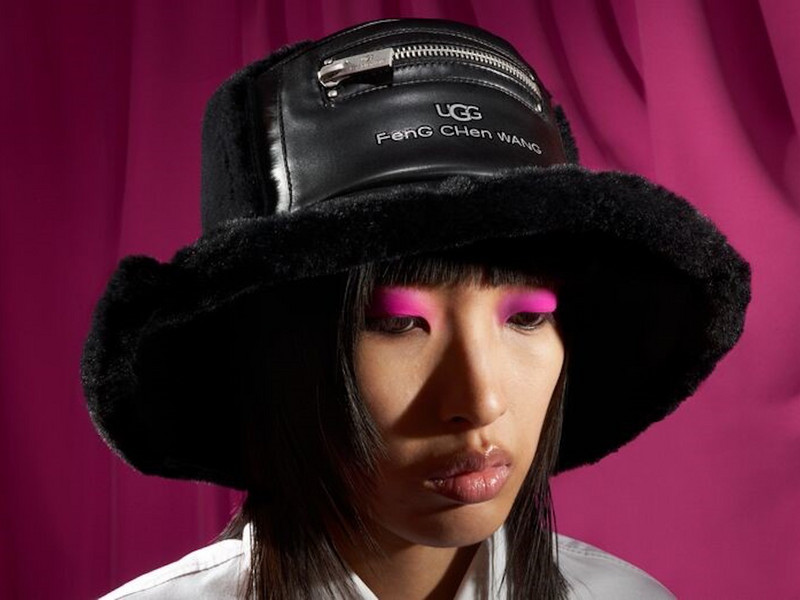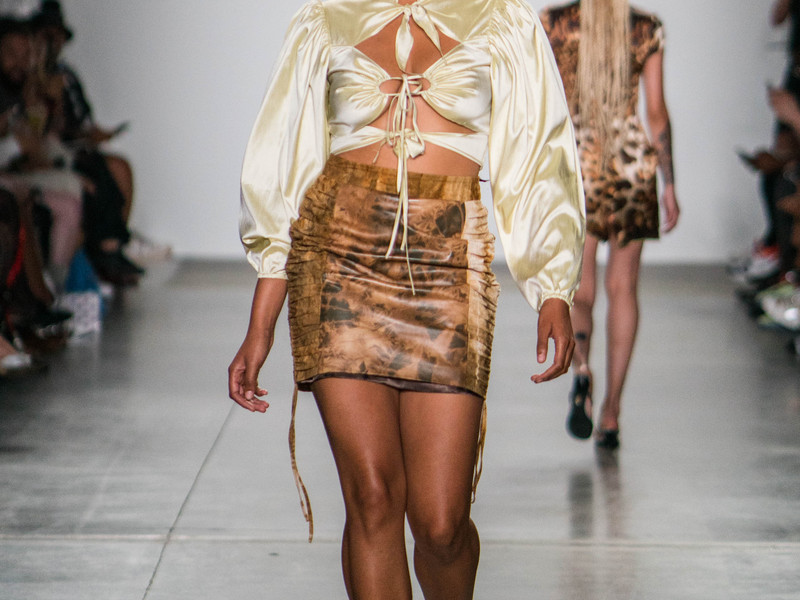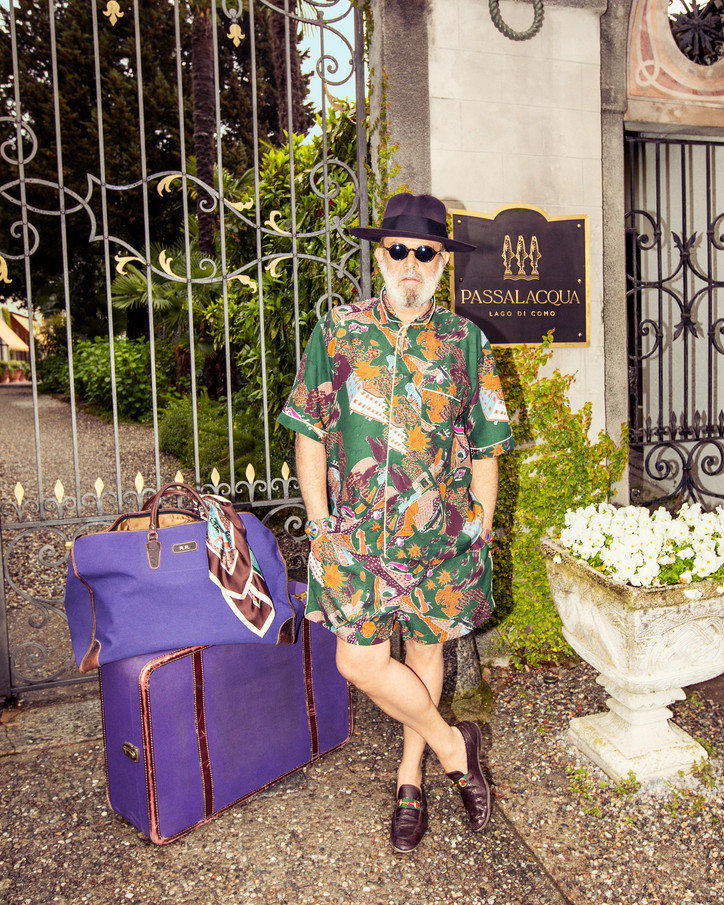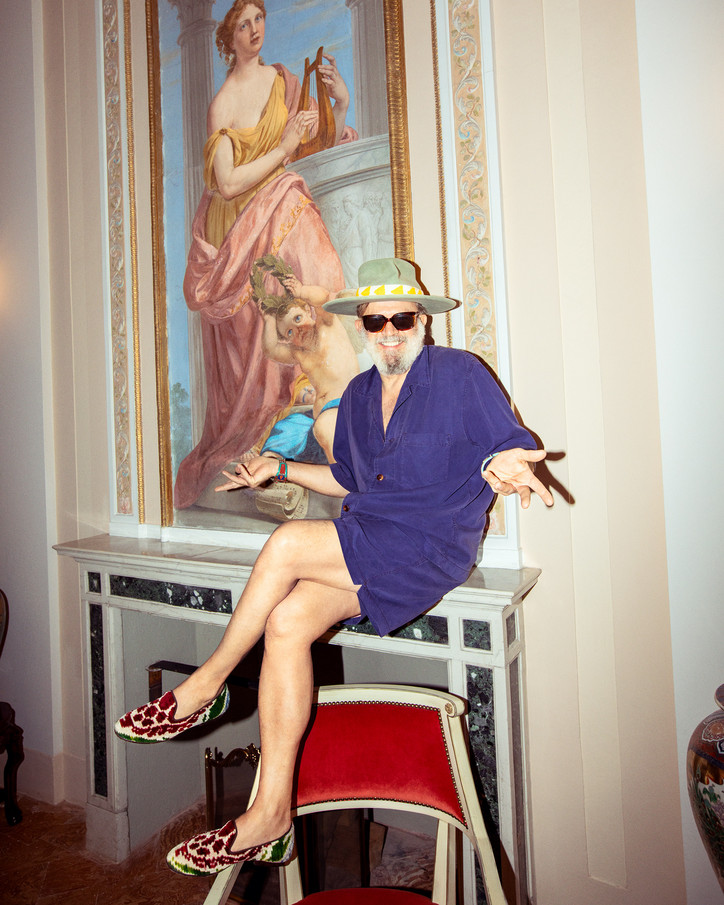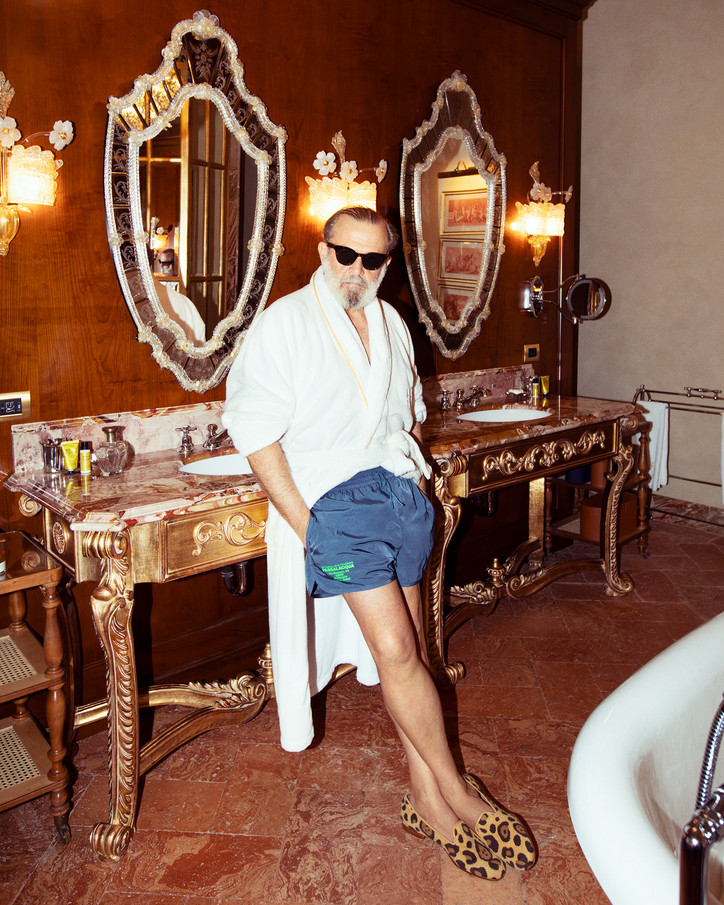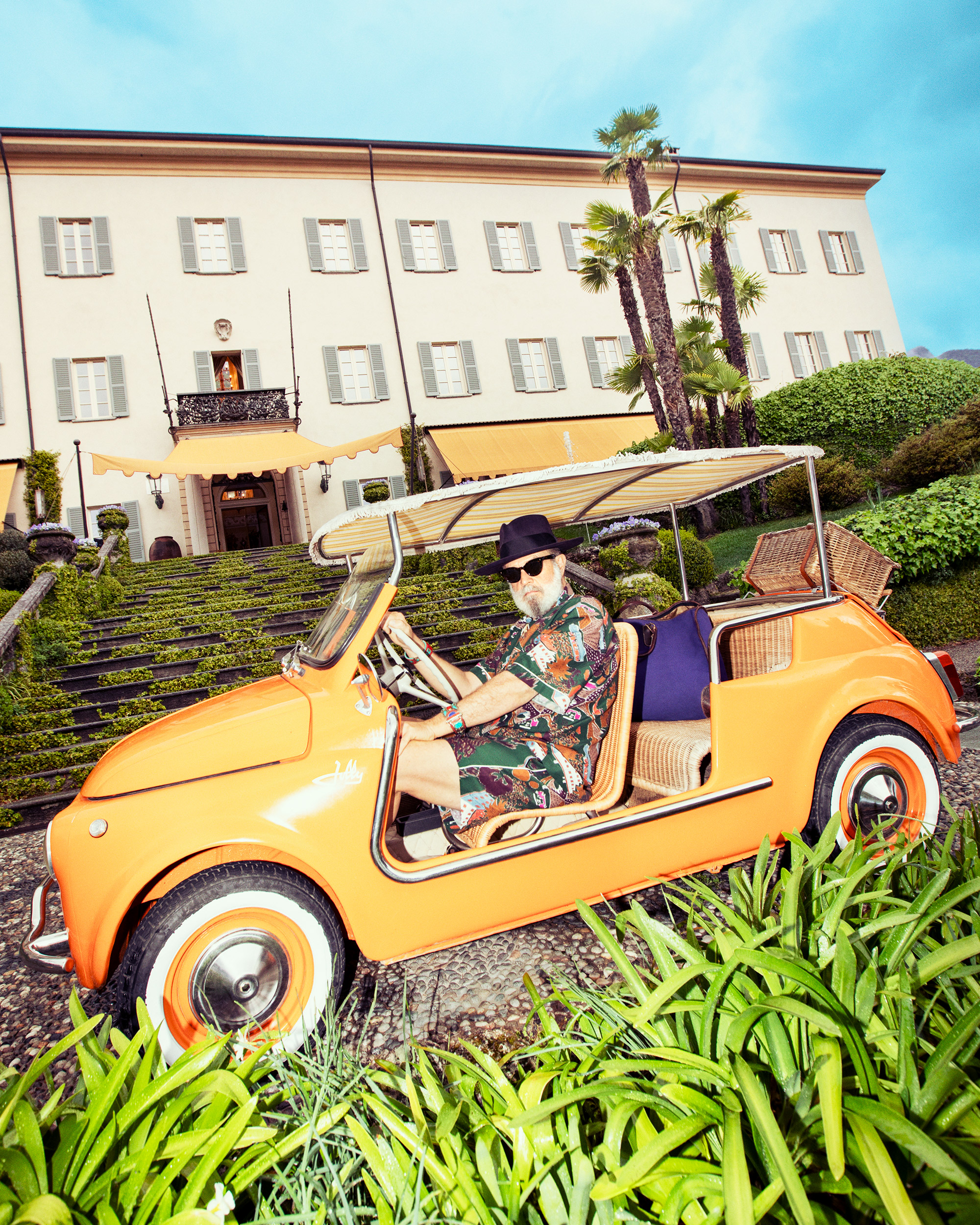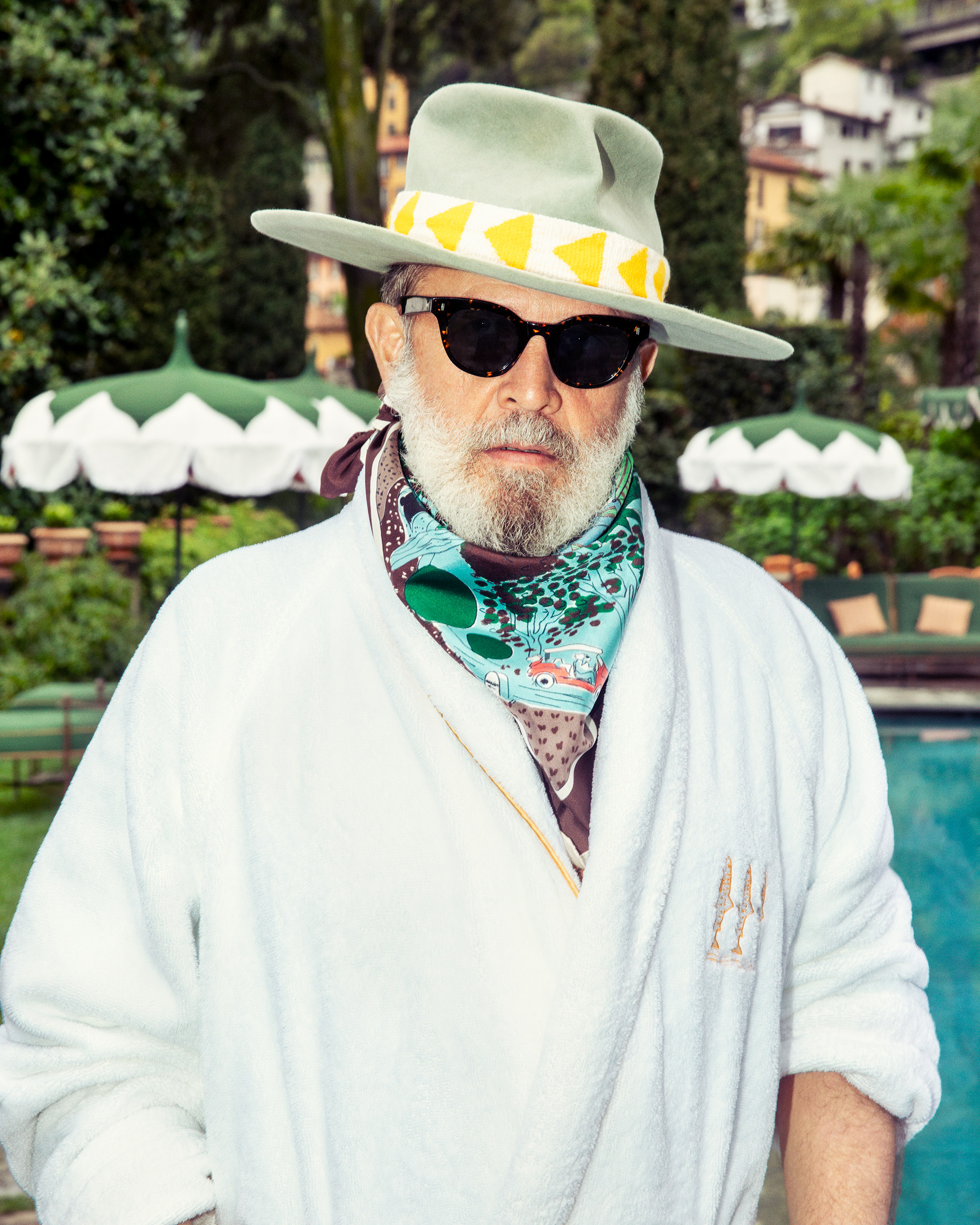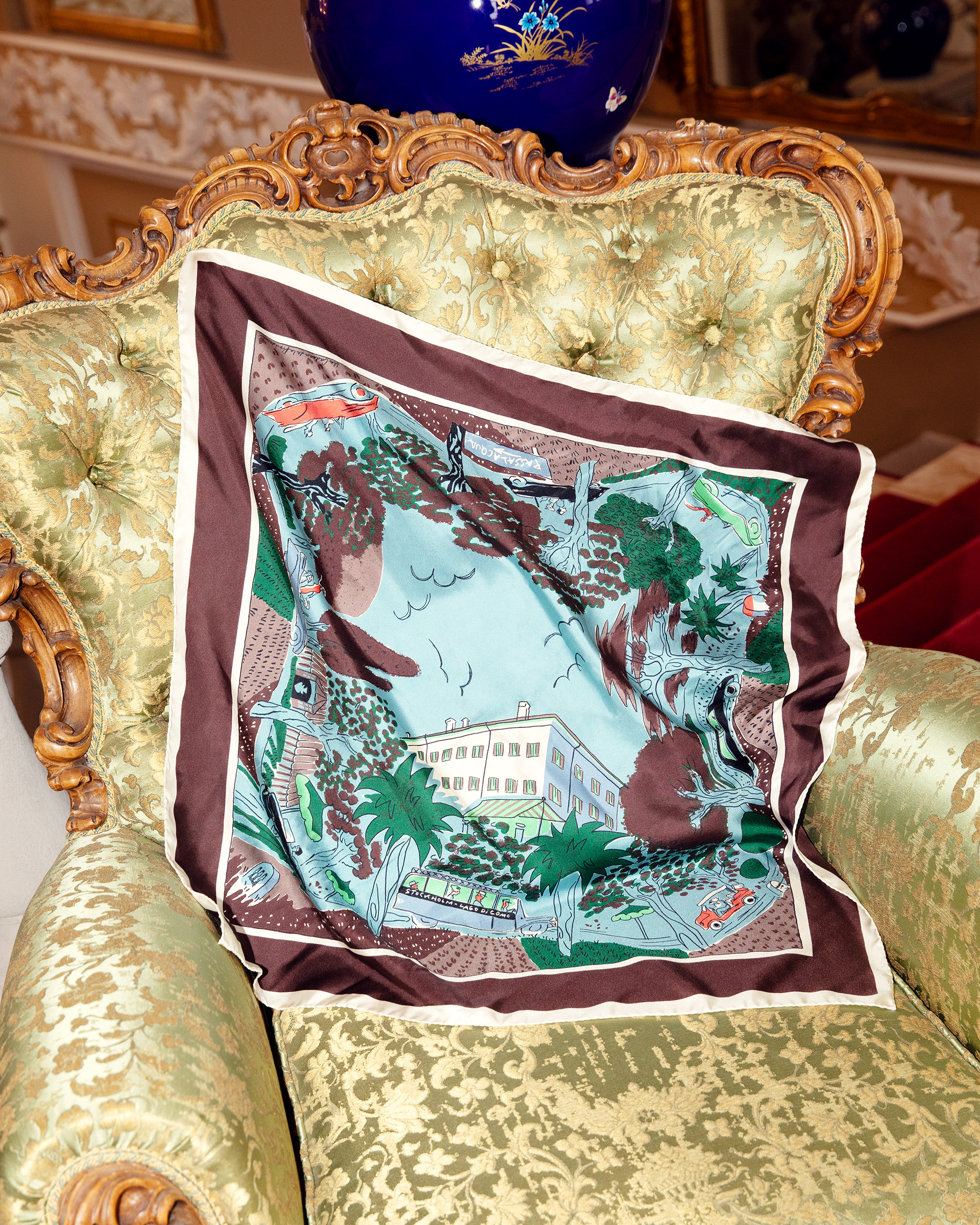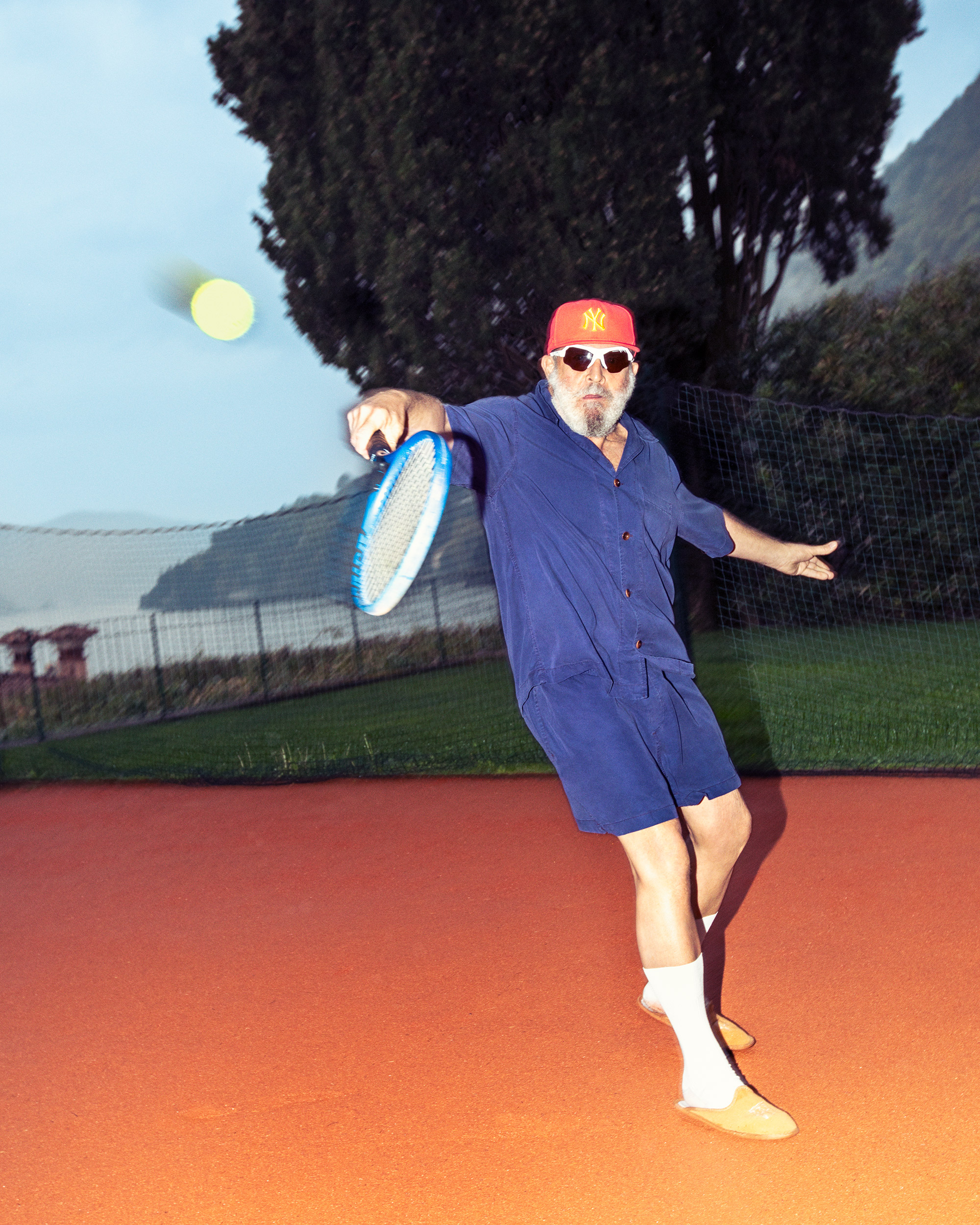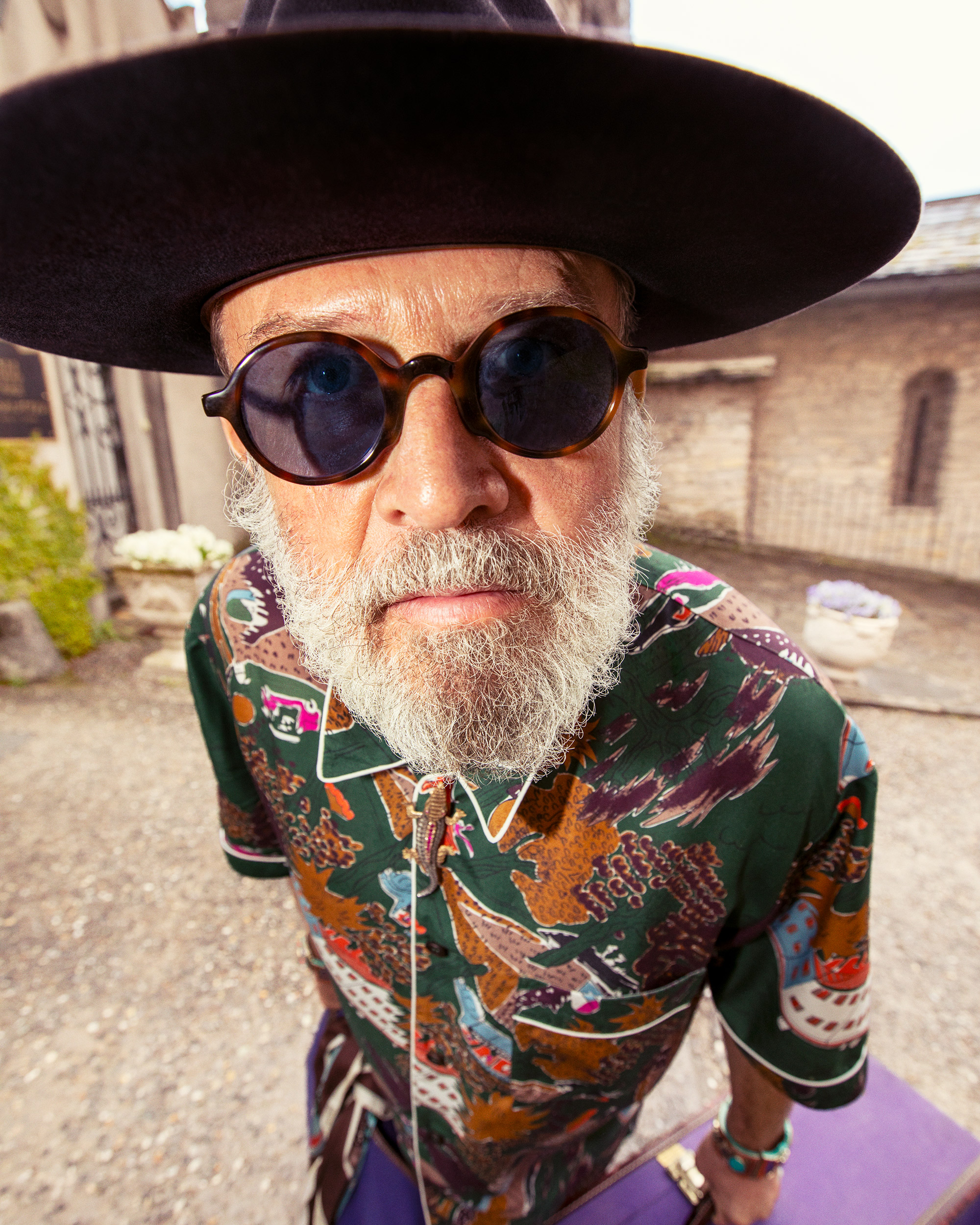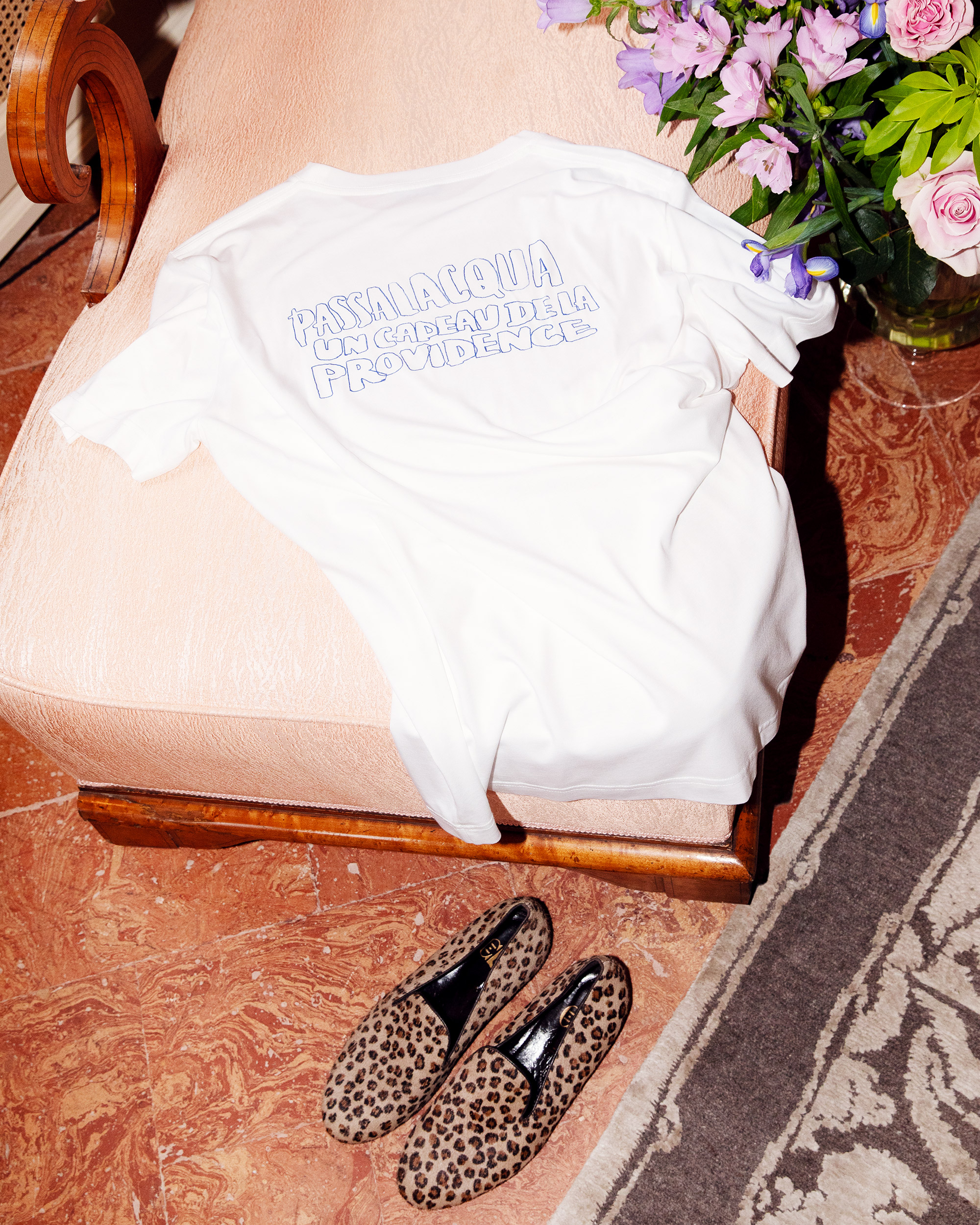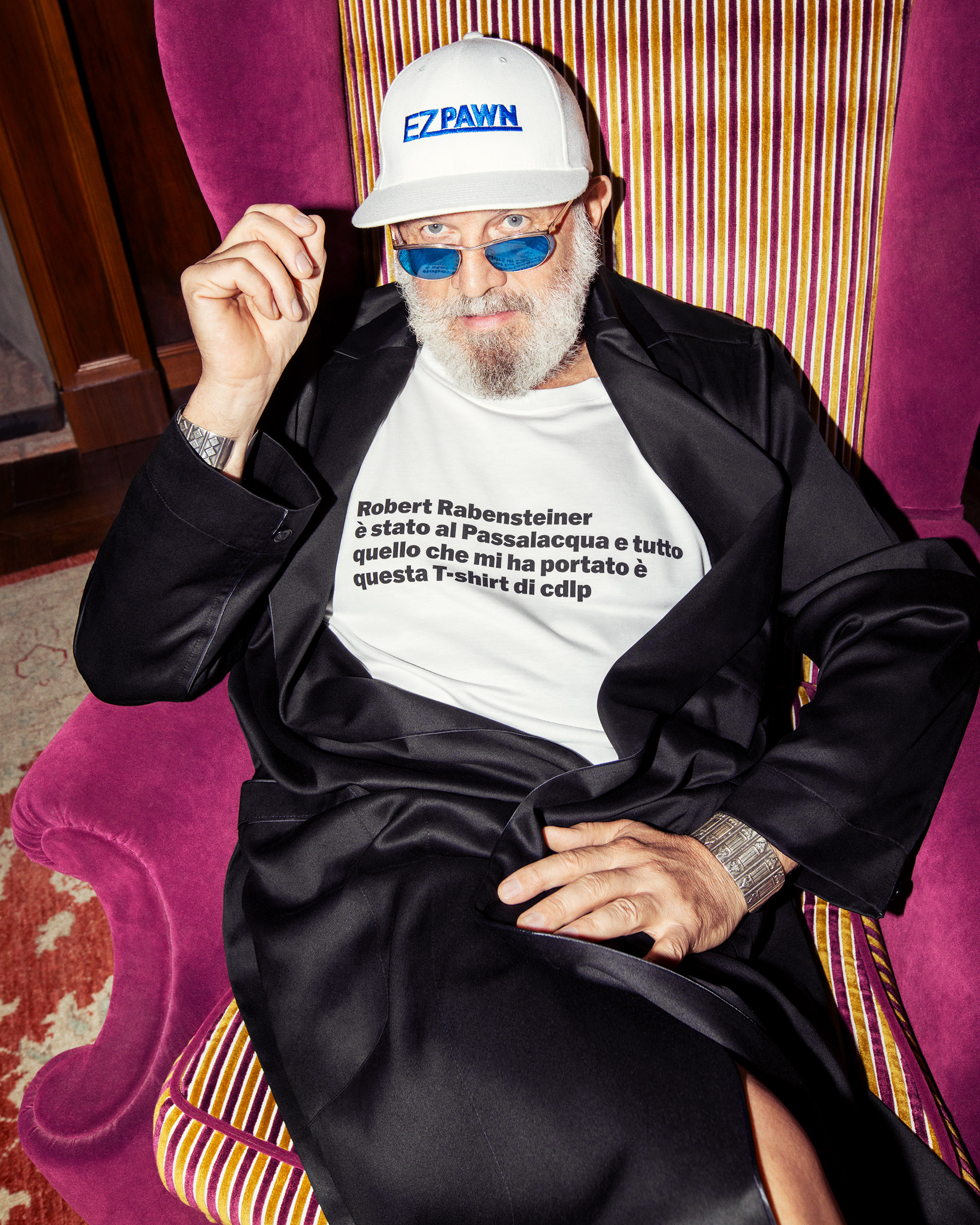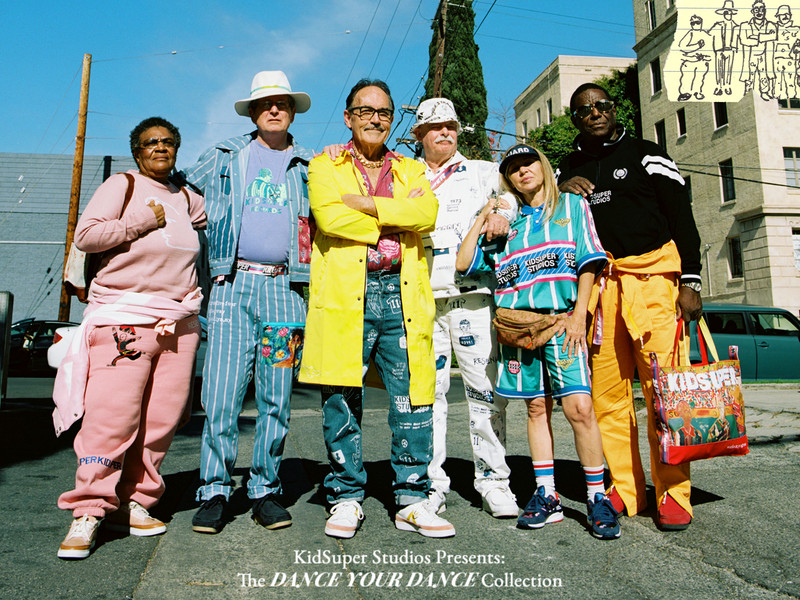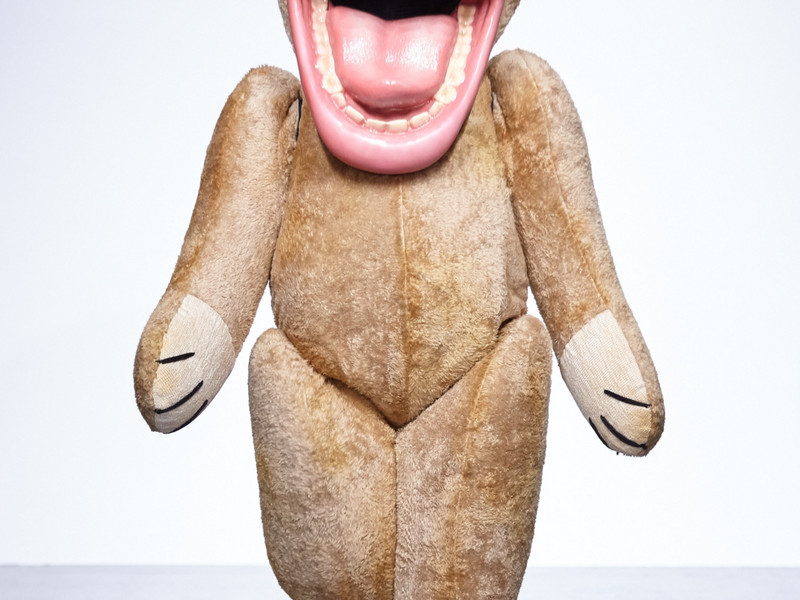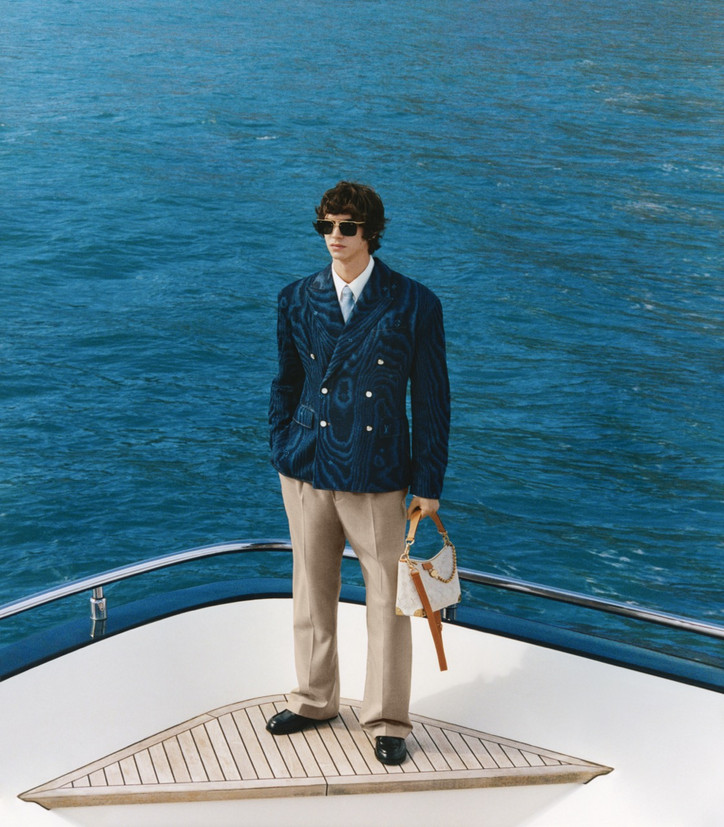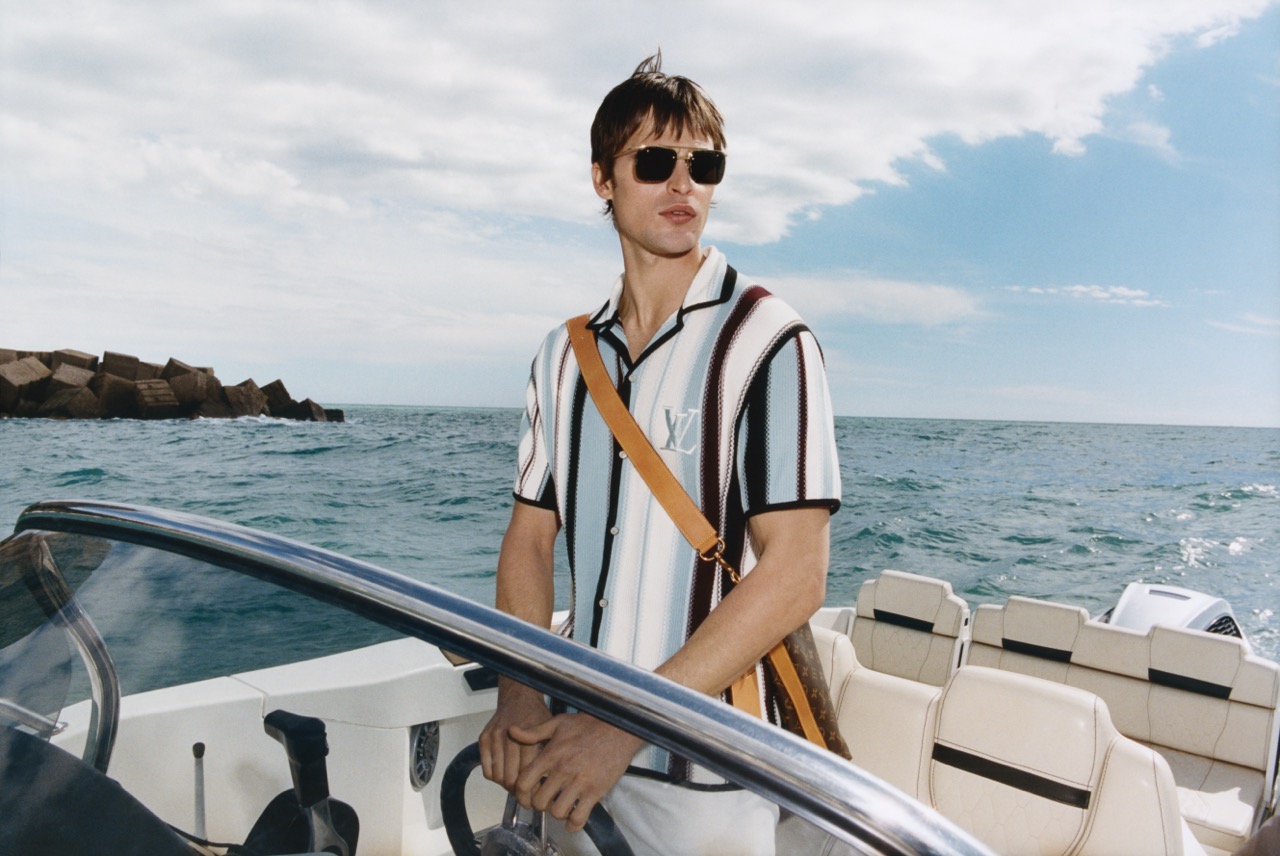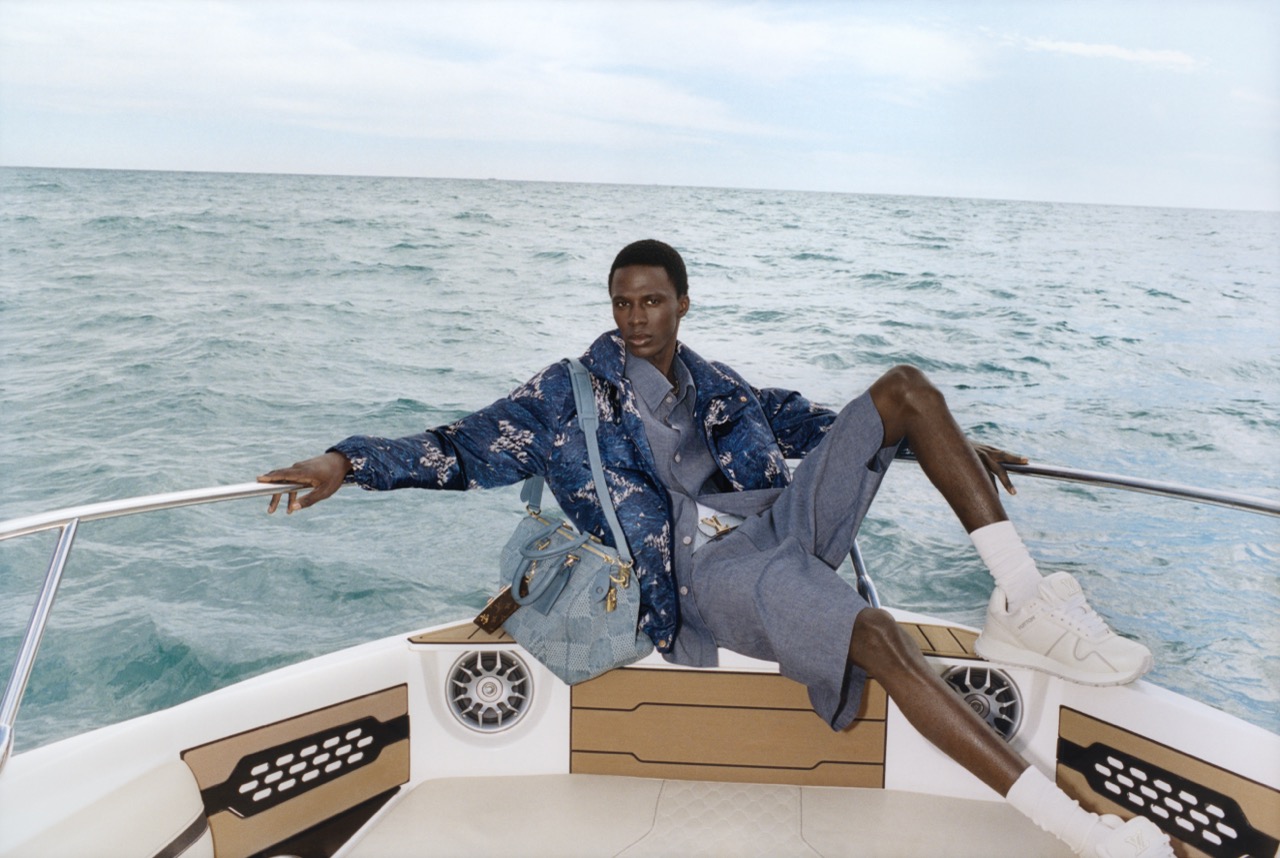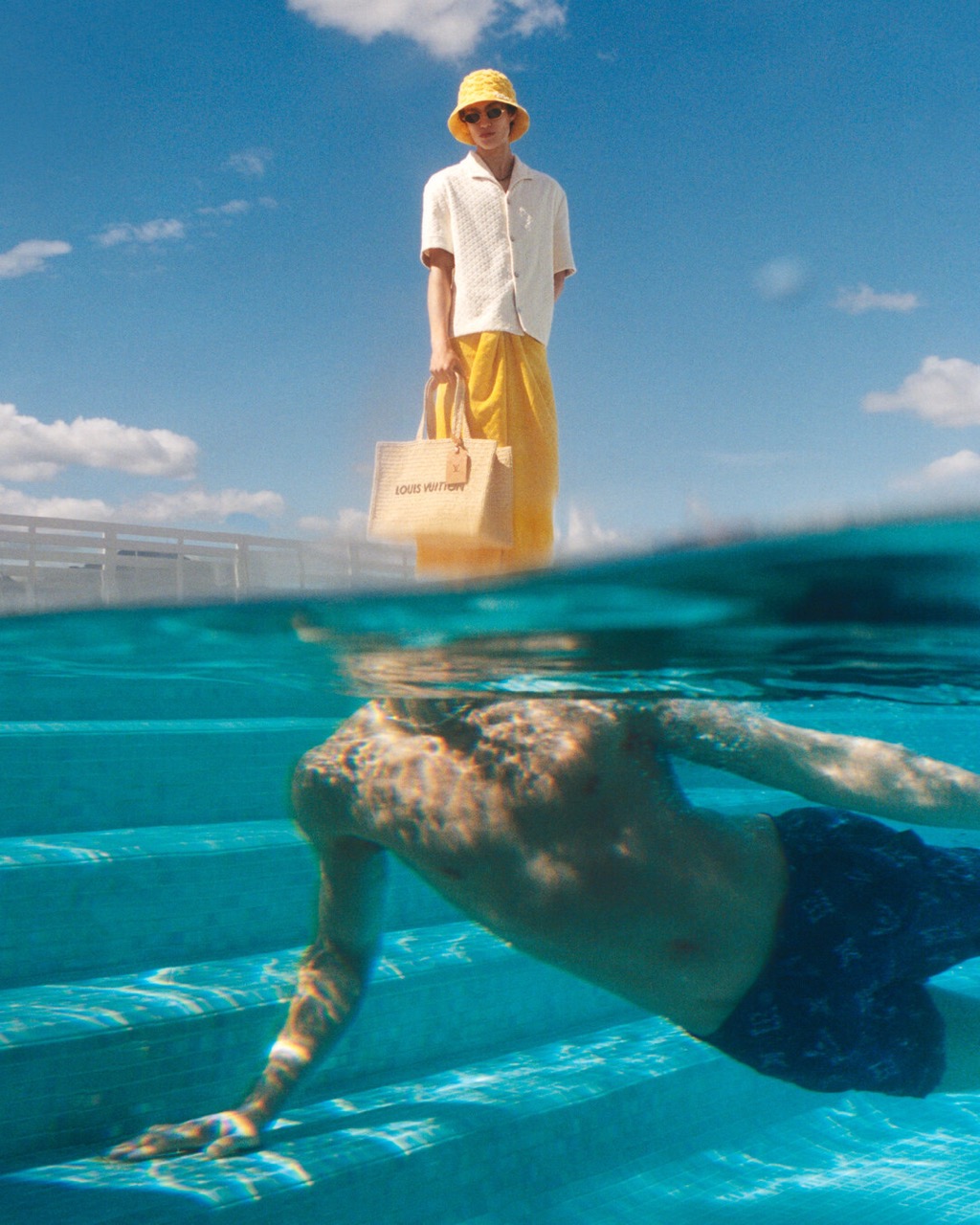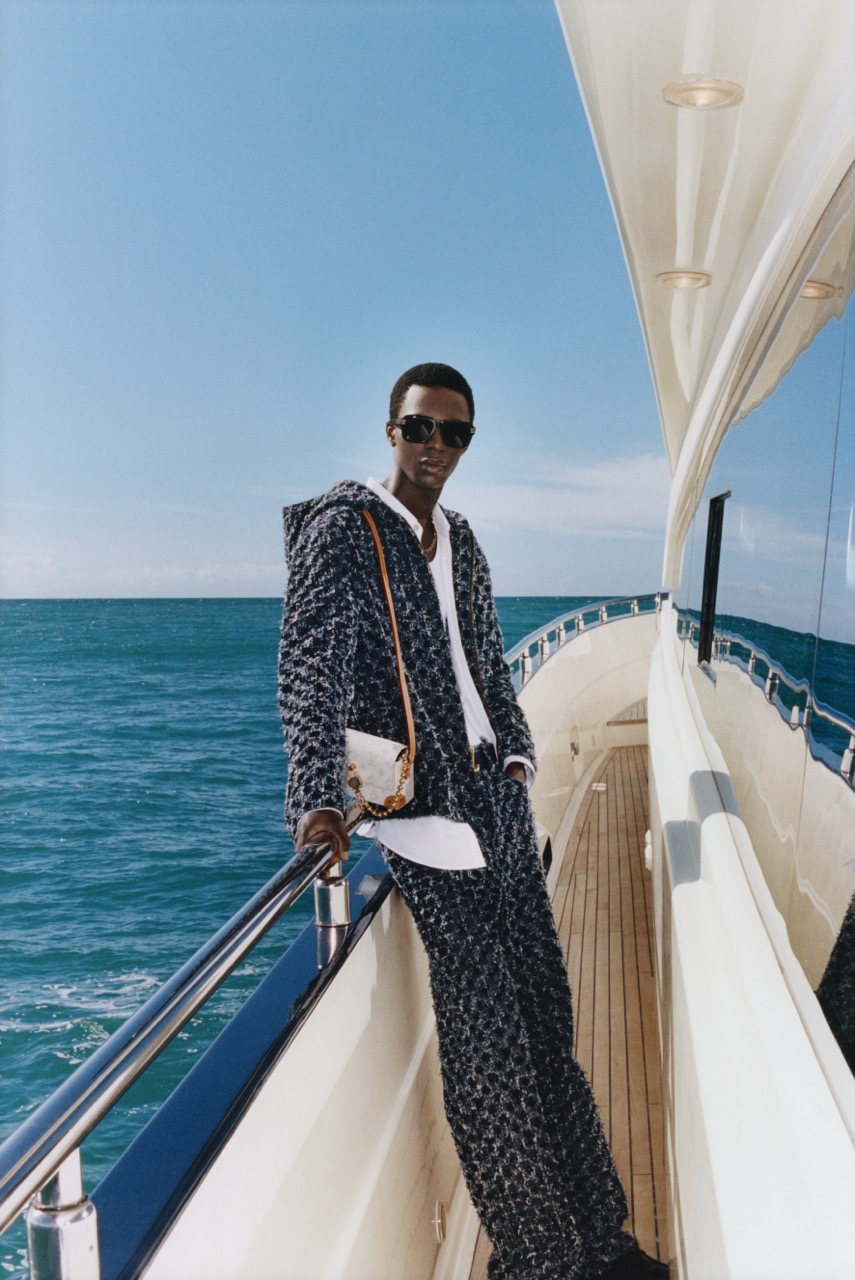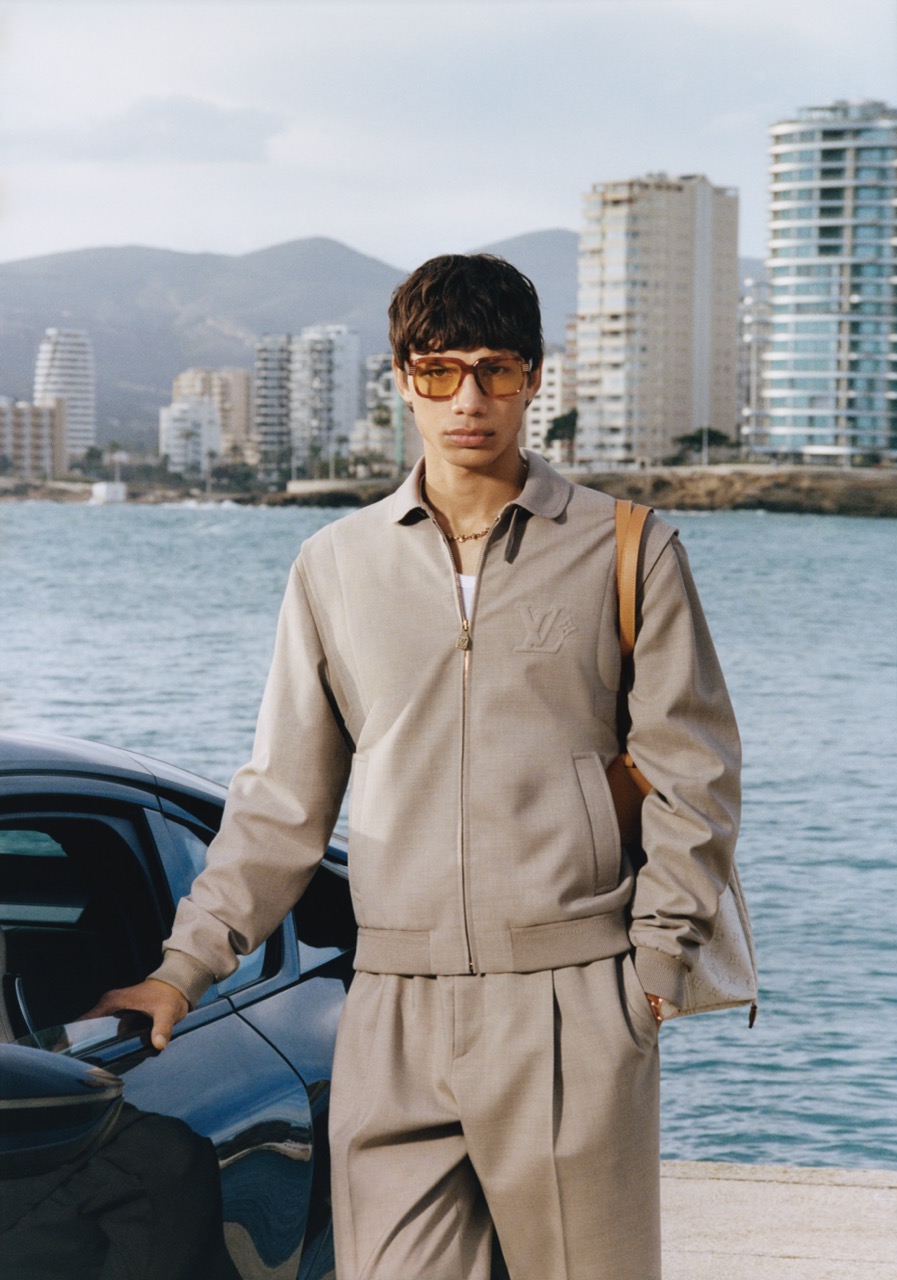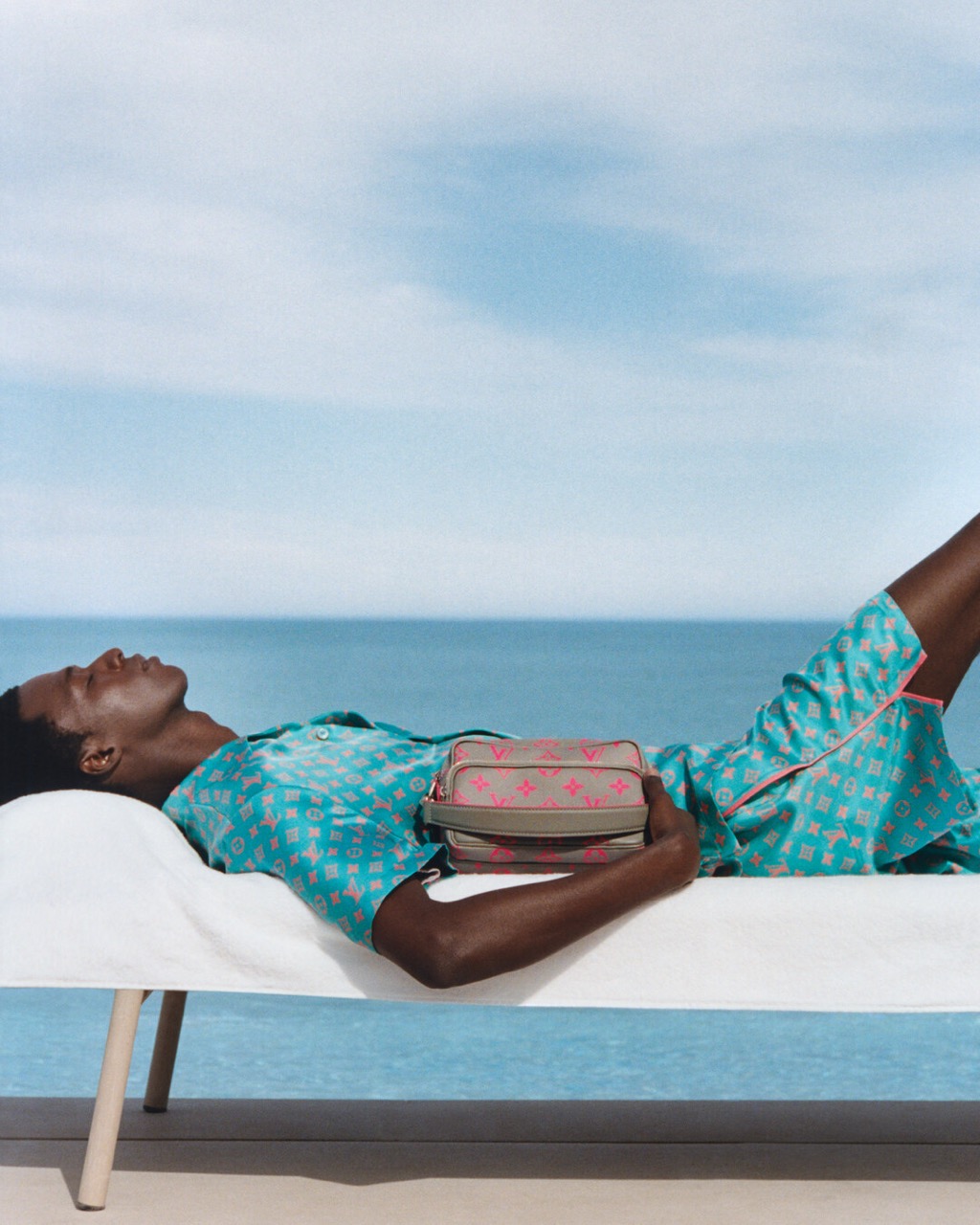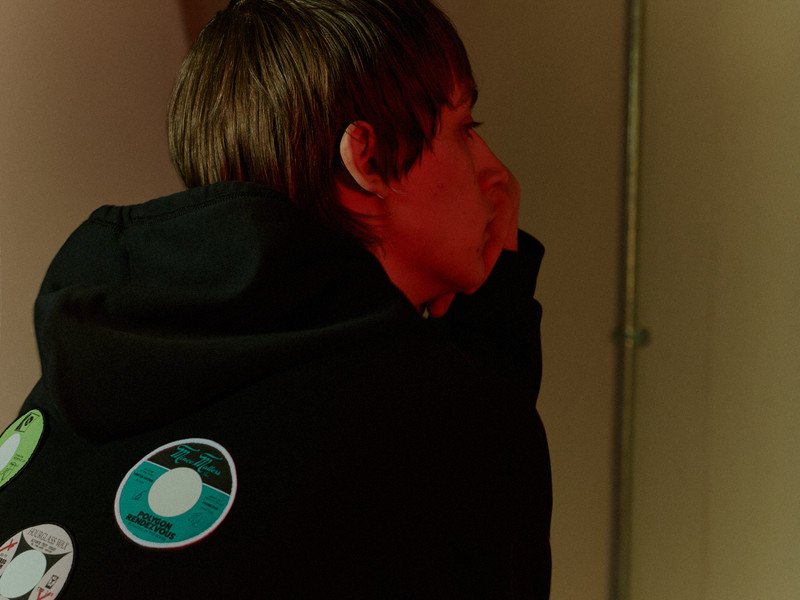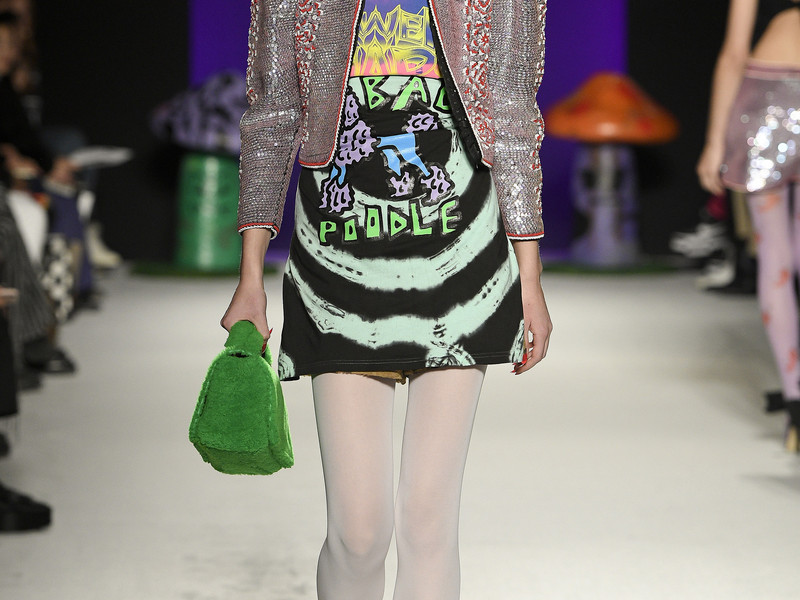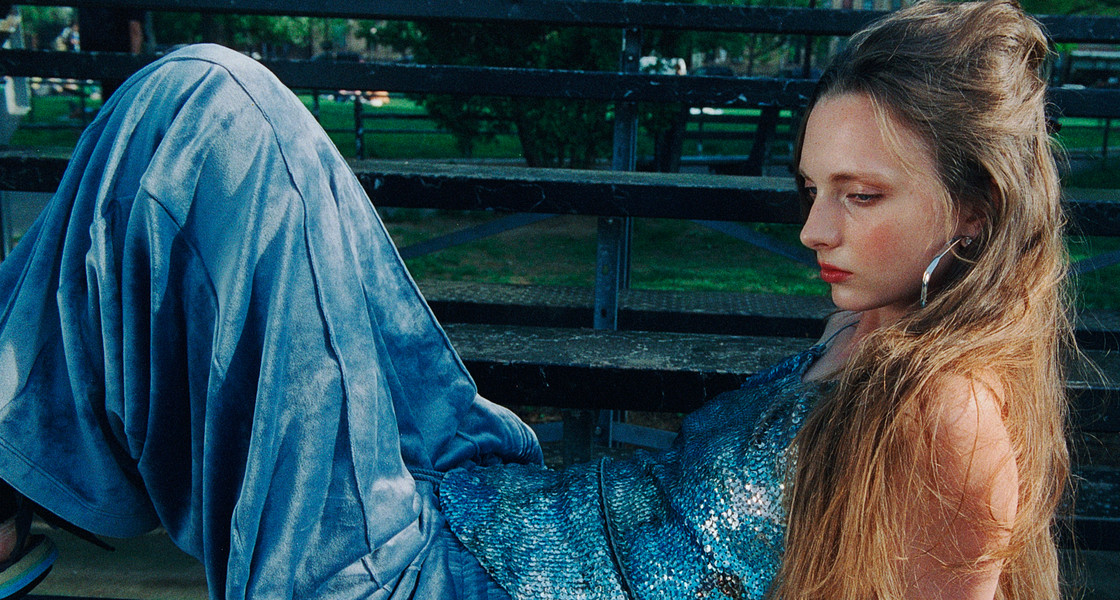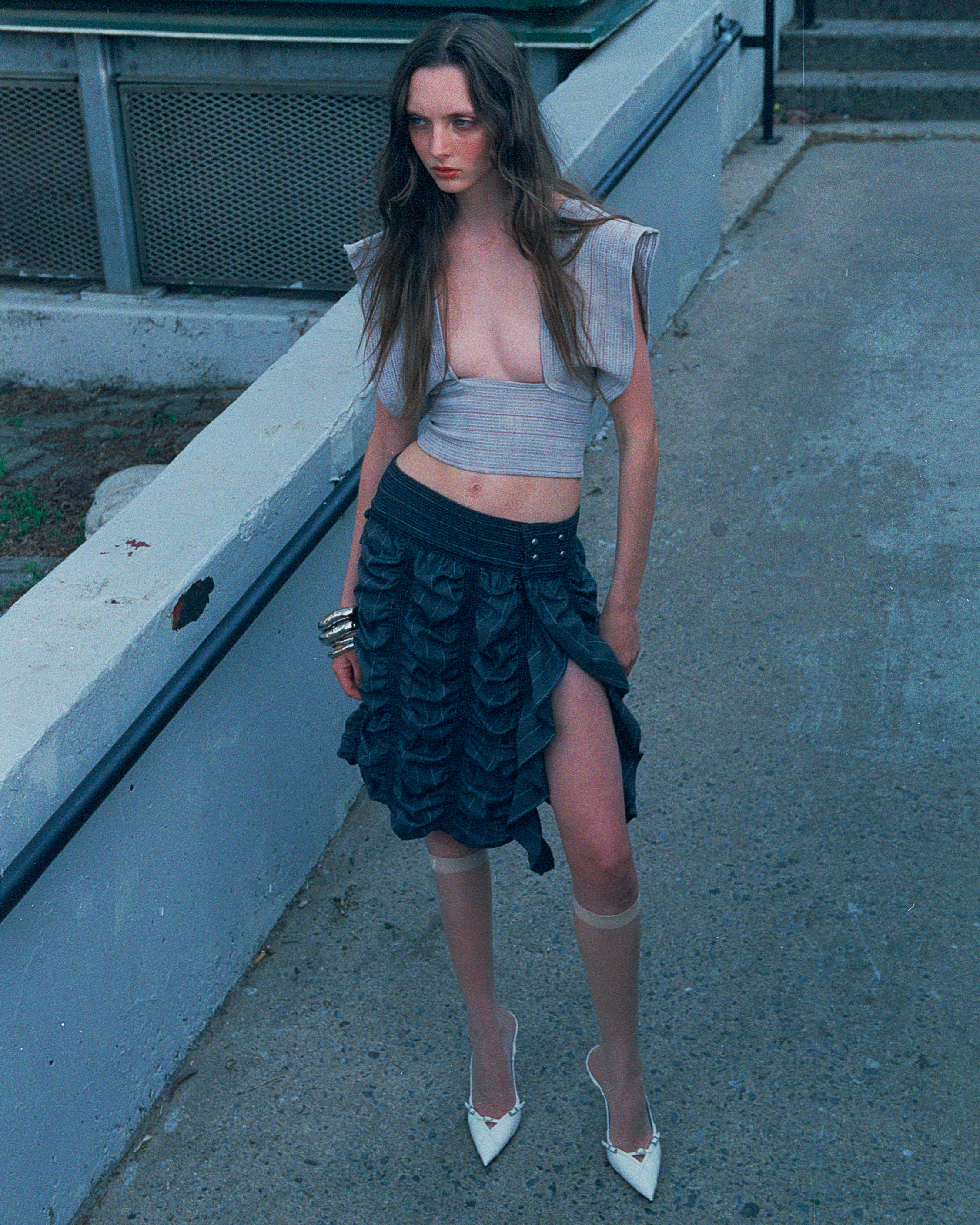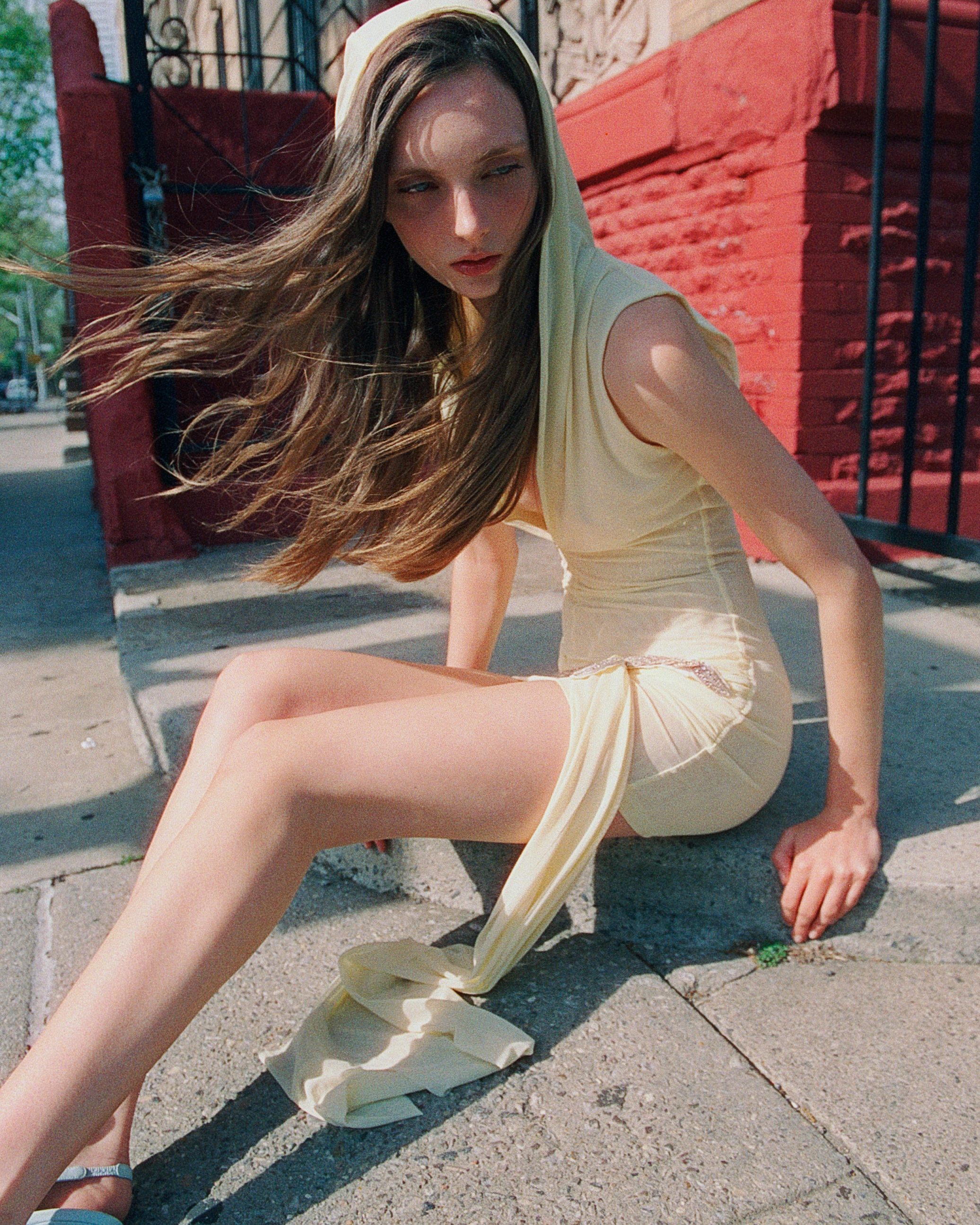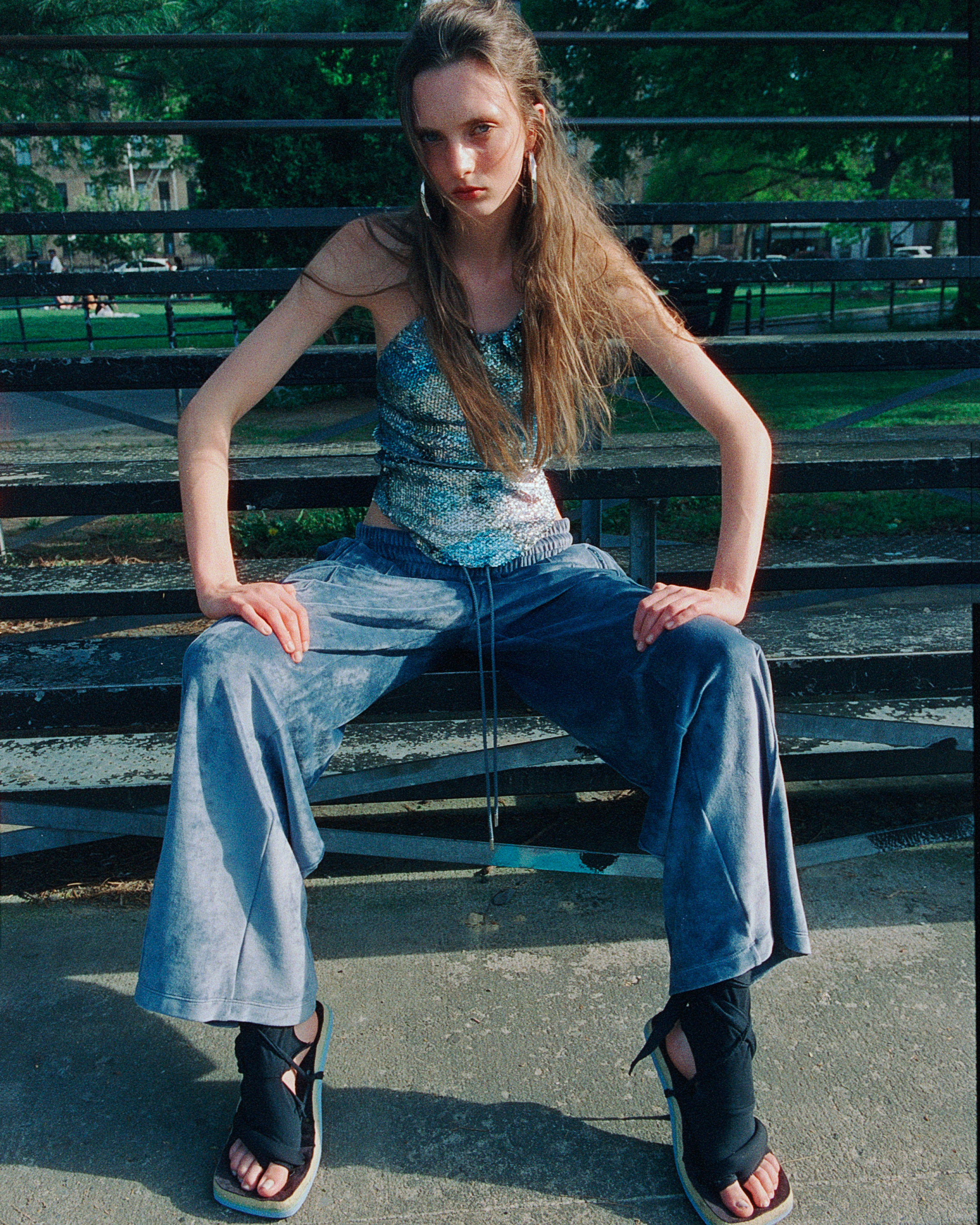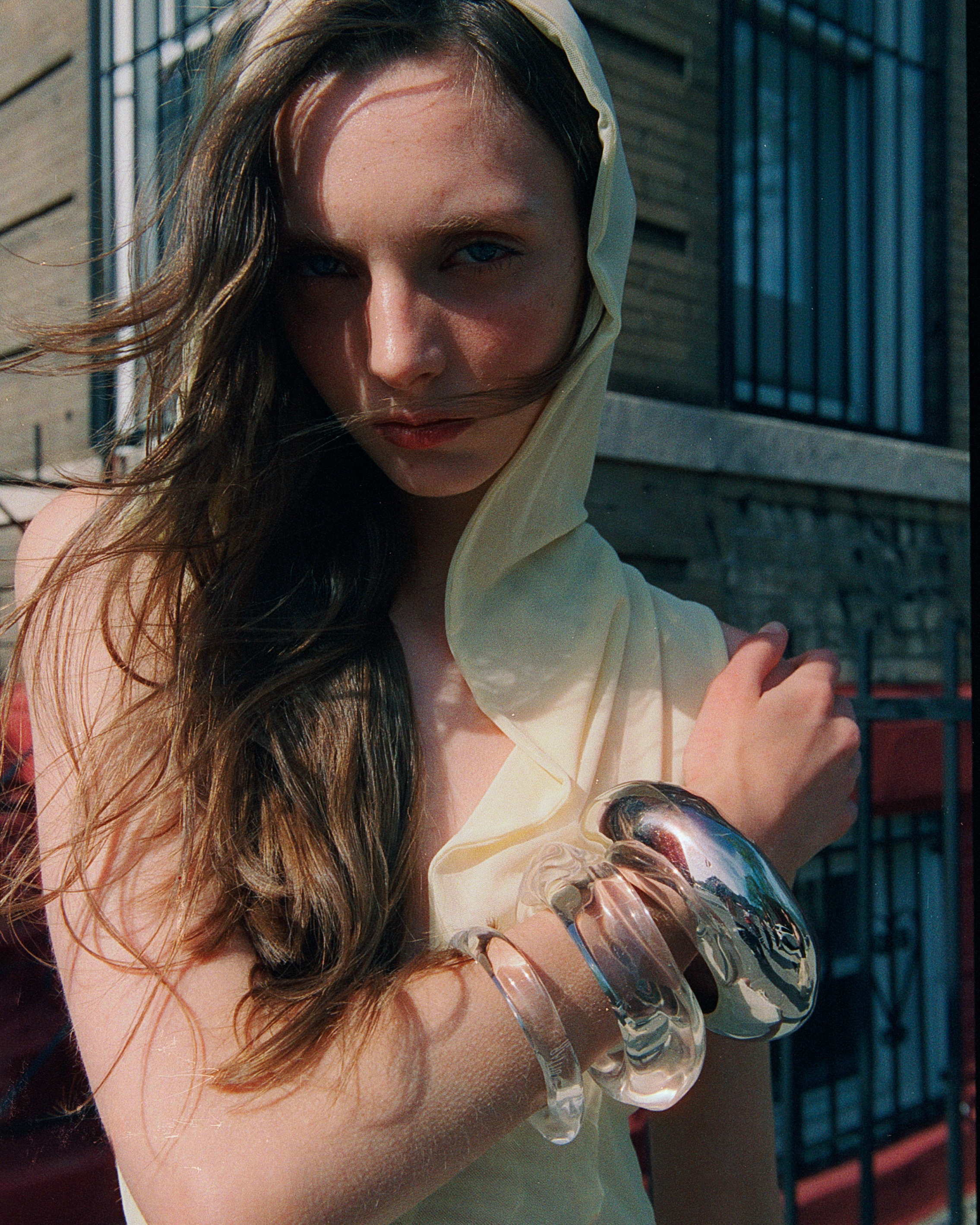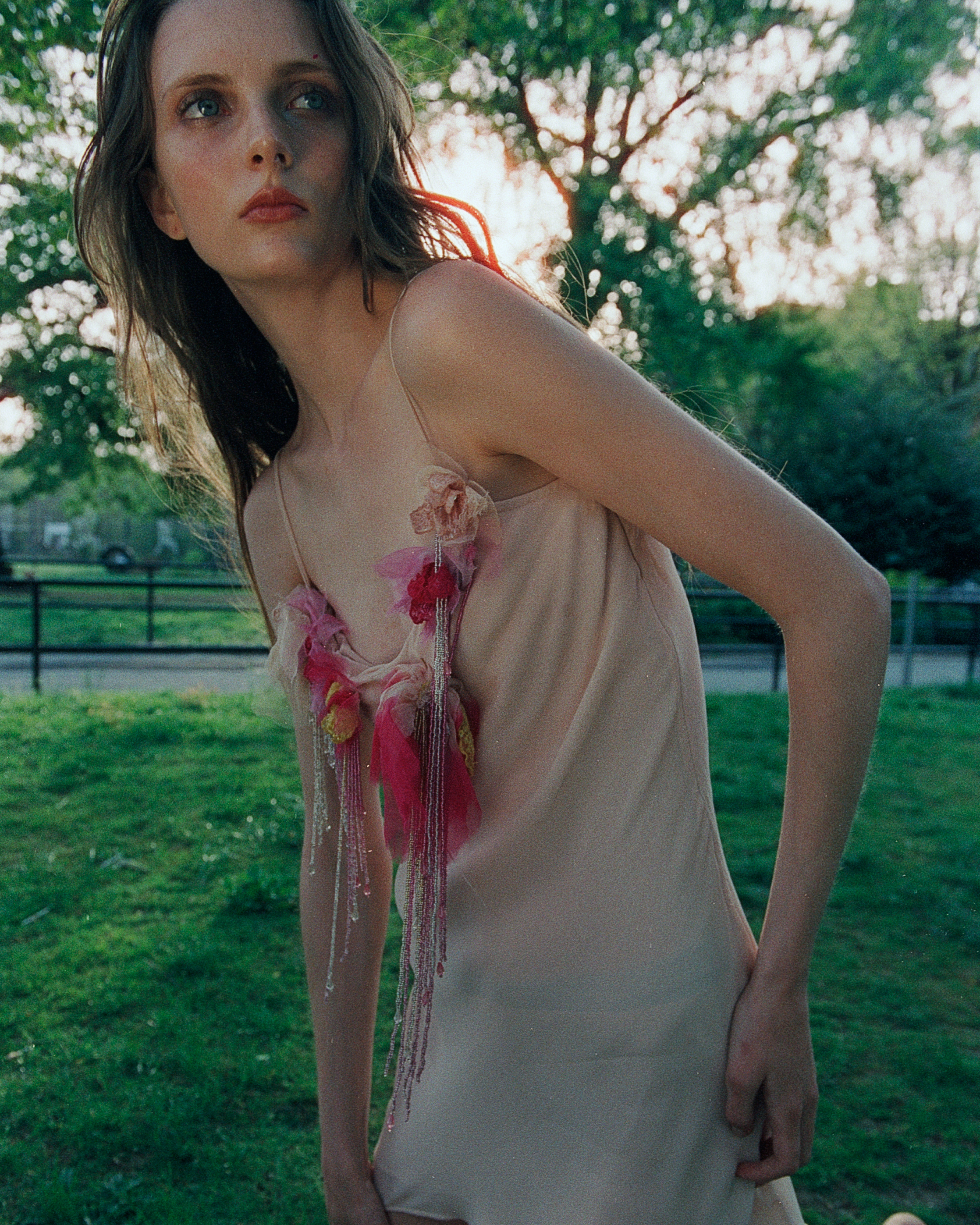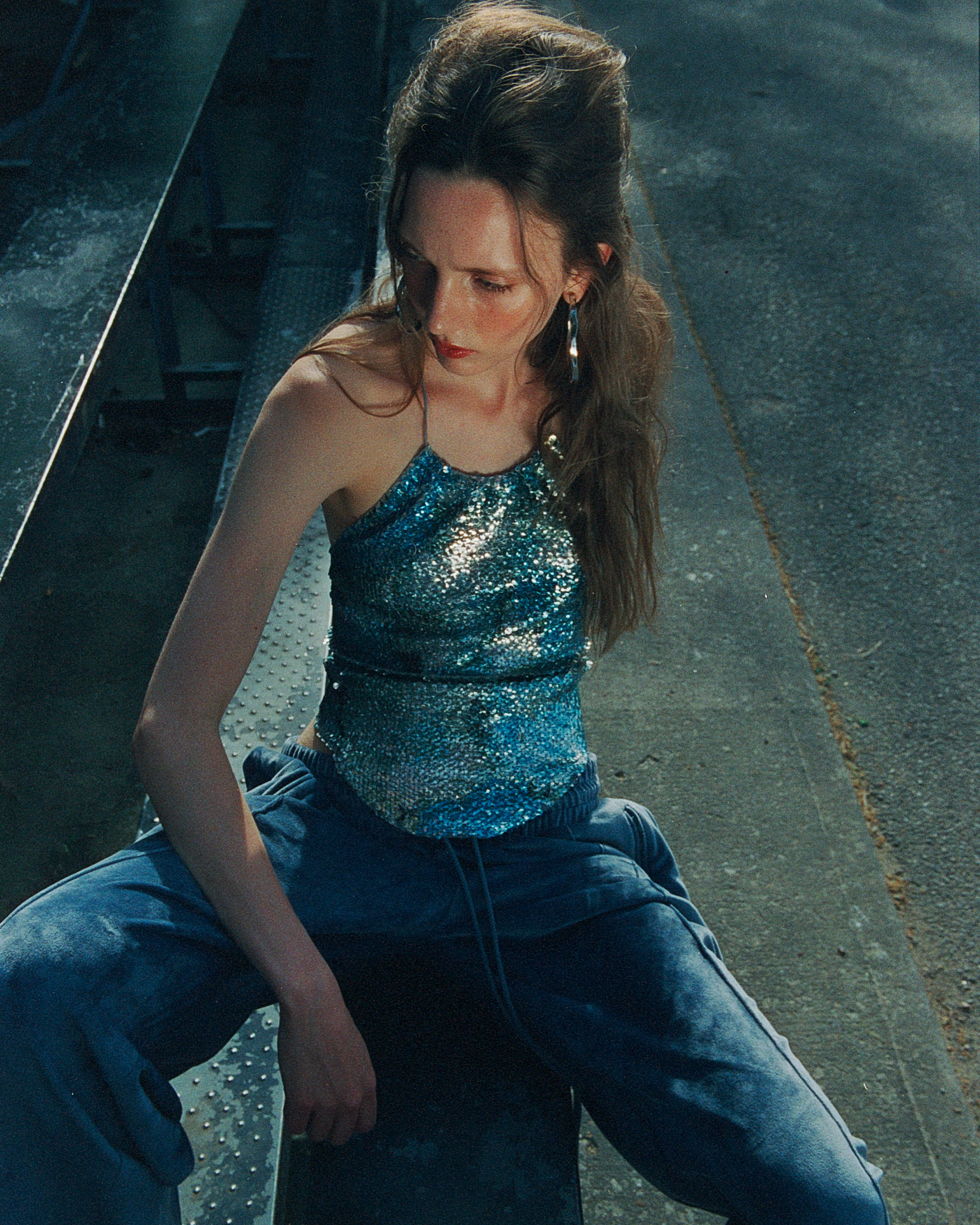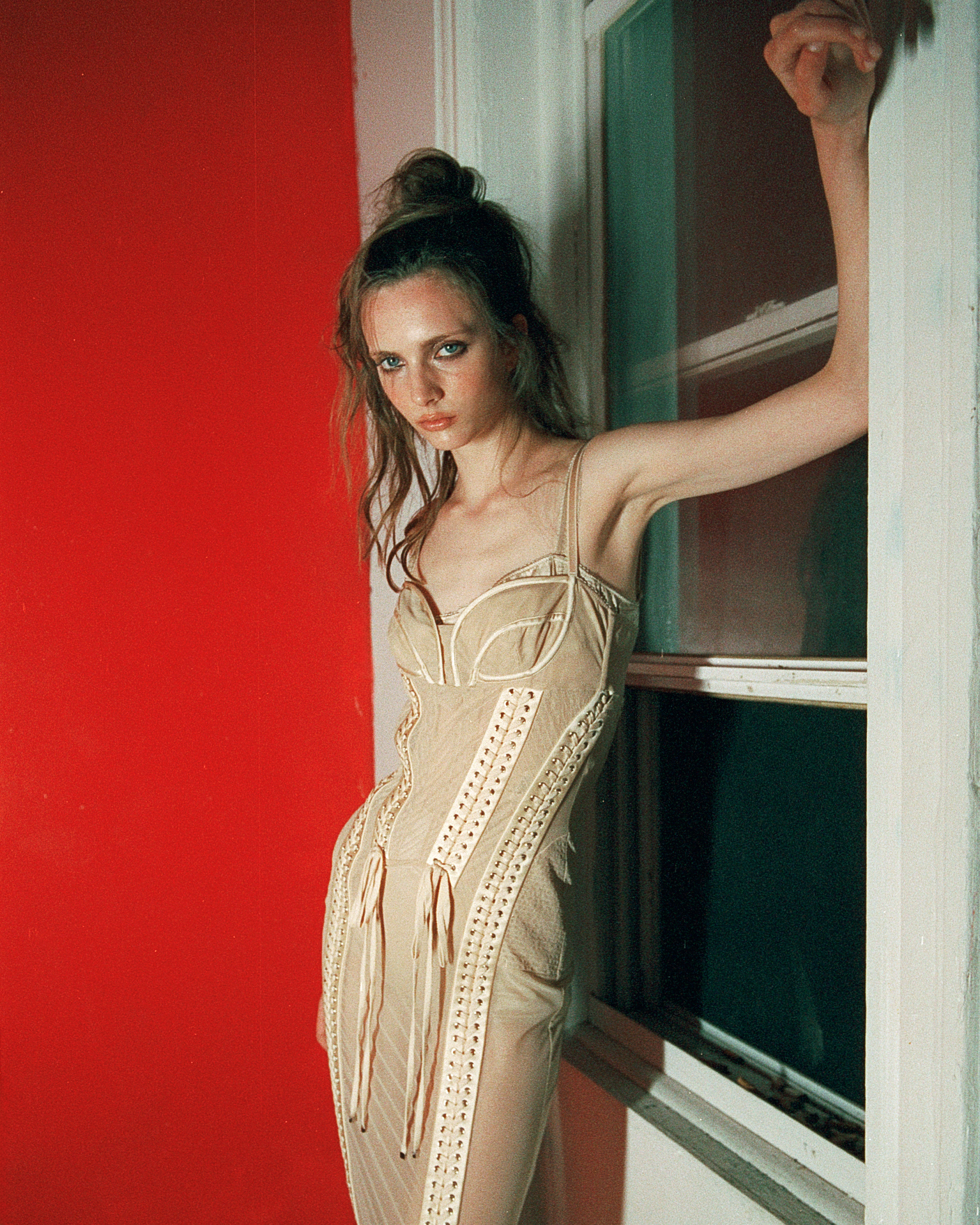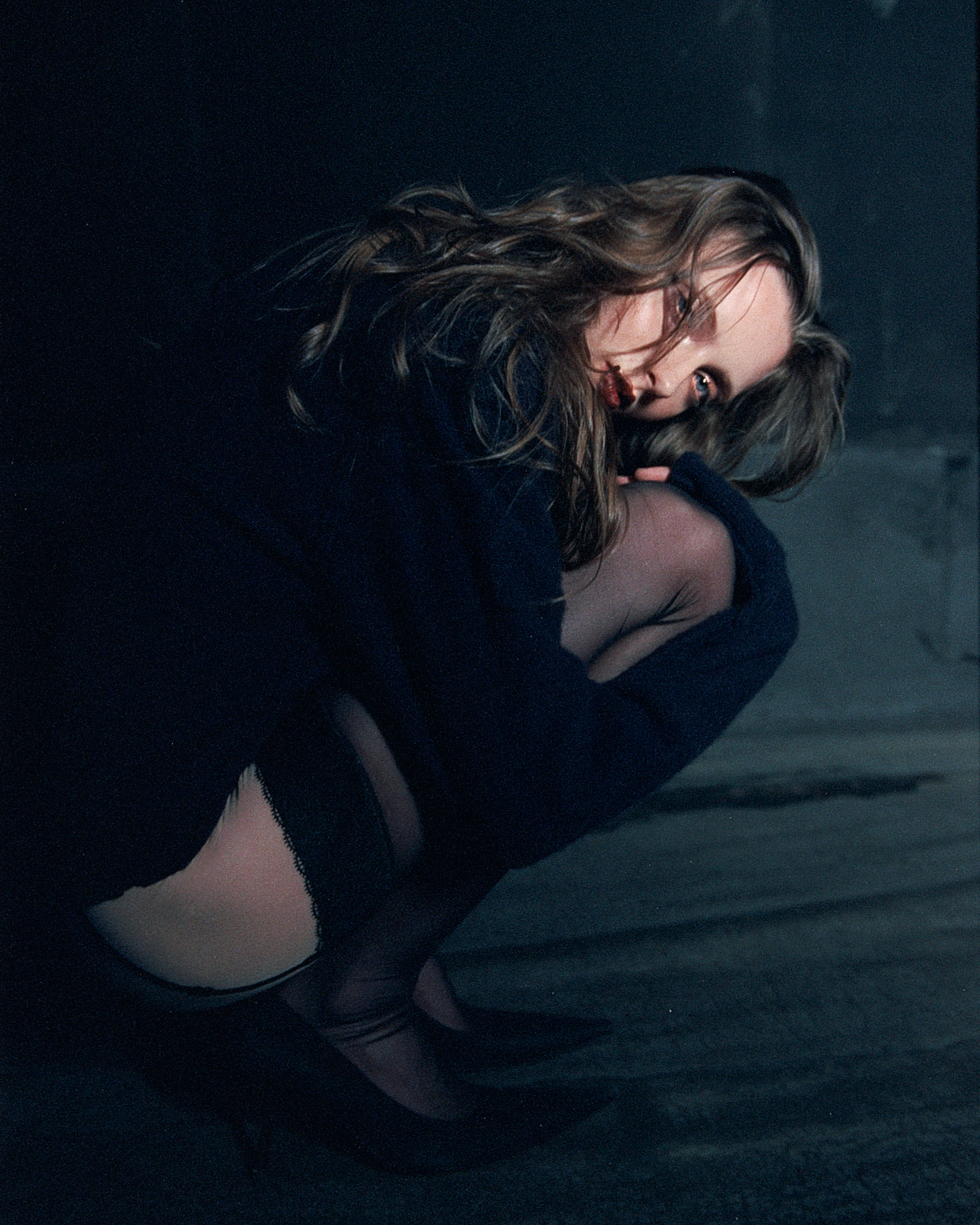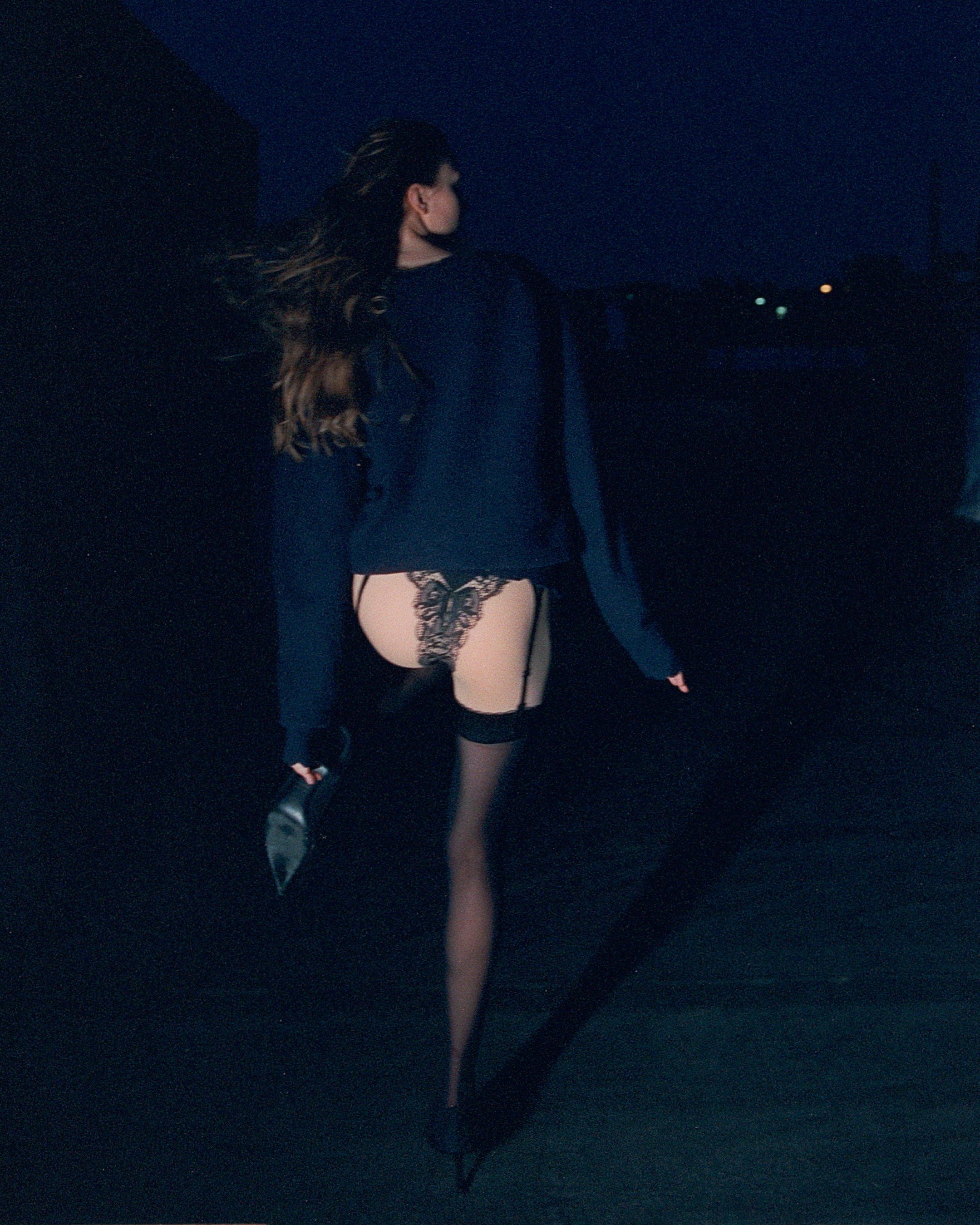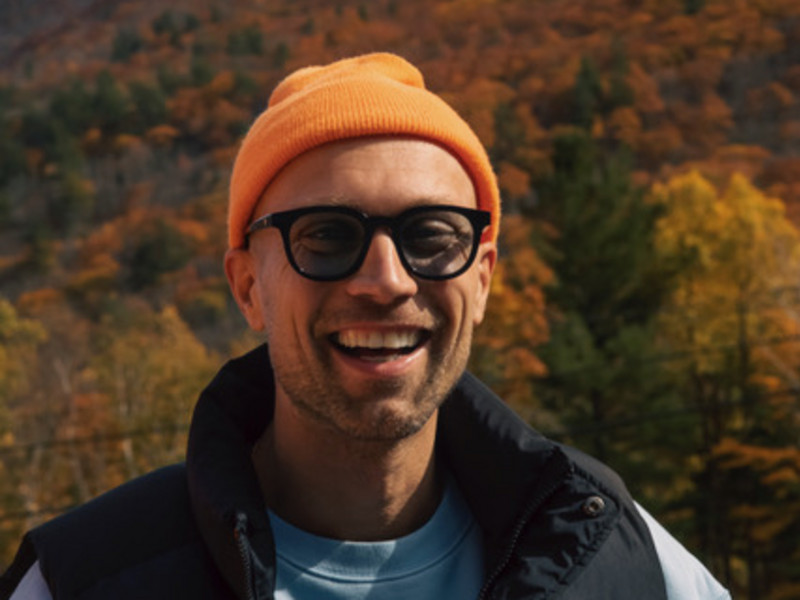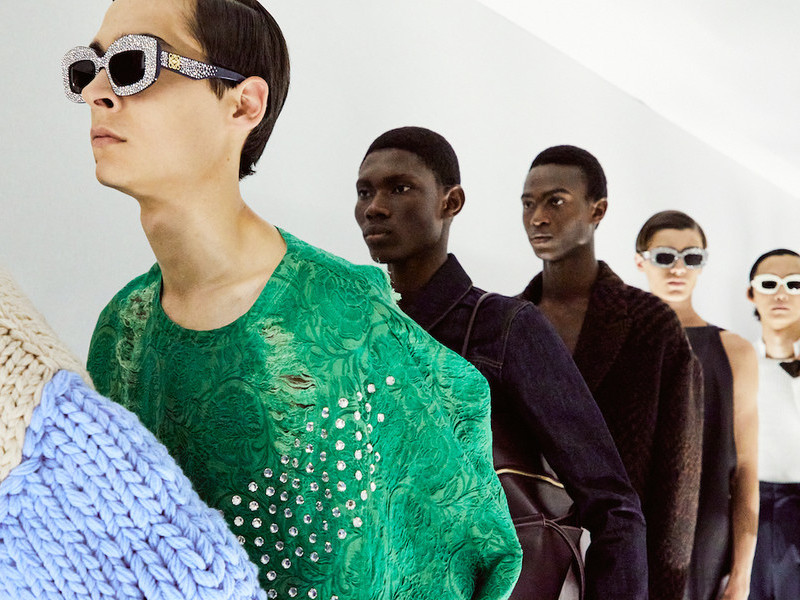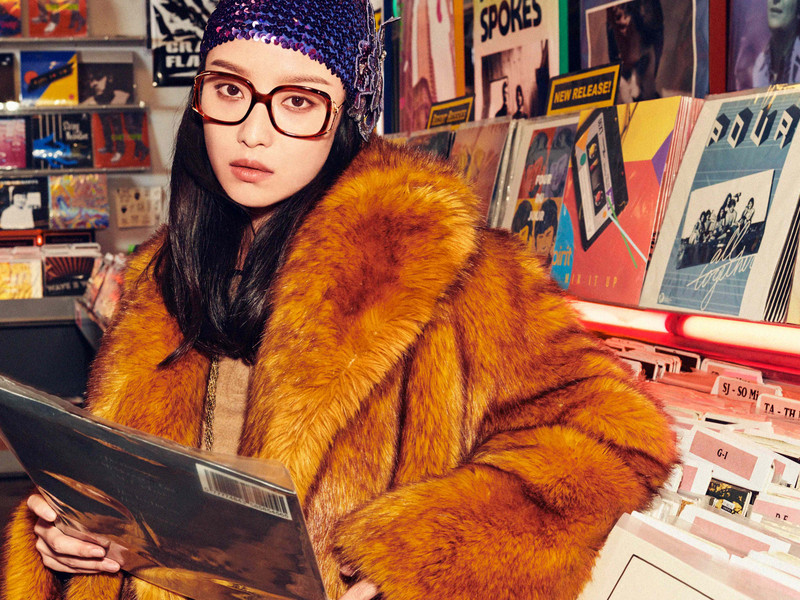Jane Wade's Studio Office
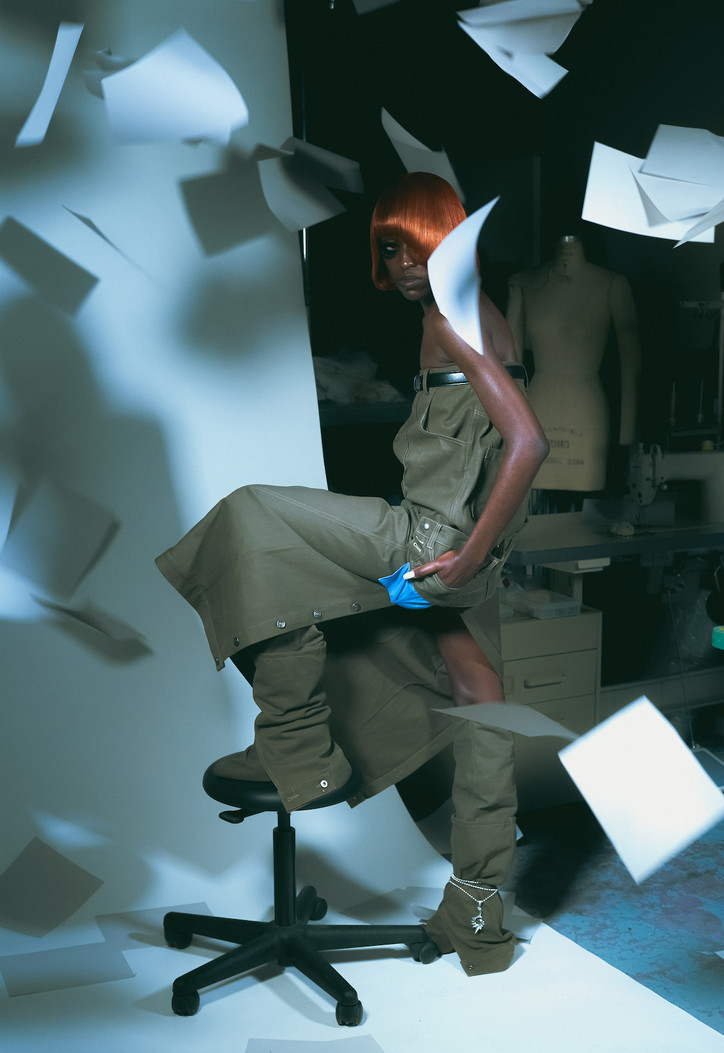
Jane seamlessly weaves together aspects of both traditional office attire with more everyday elements — think cargo meets technical suiting, or an extra-long durag paired with a button-up gown. Her popular exposed-breasted bustier is technically an undergarment — made from a cut-out blazer — but it doesn’t mean you can’t wear it over your white-collared button-down. Or a long skirt suit belted at your bust marrying utilitarian workwear standards with a very feminine sex appeal. Jane does both, reminding us that you don’t have to hide just because you’re clocked-in.
office visited Jane's studio-office to chat about how she's developed her brand, her own NY community and the moments in-between.
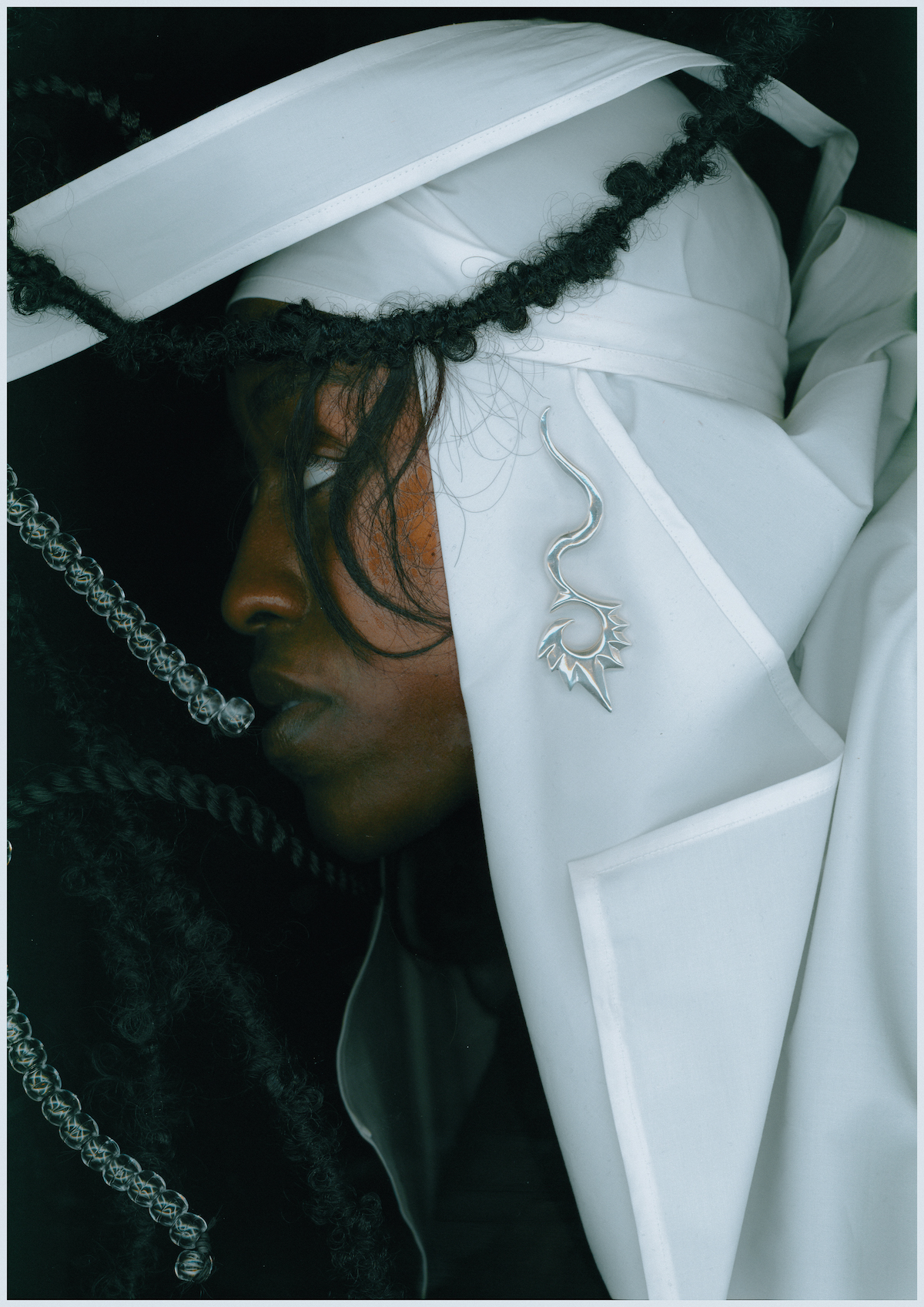
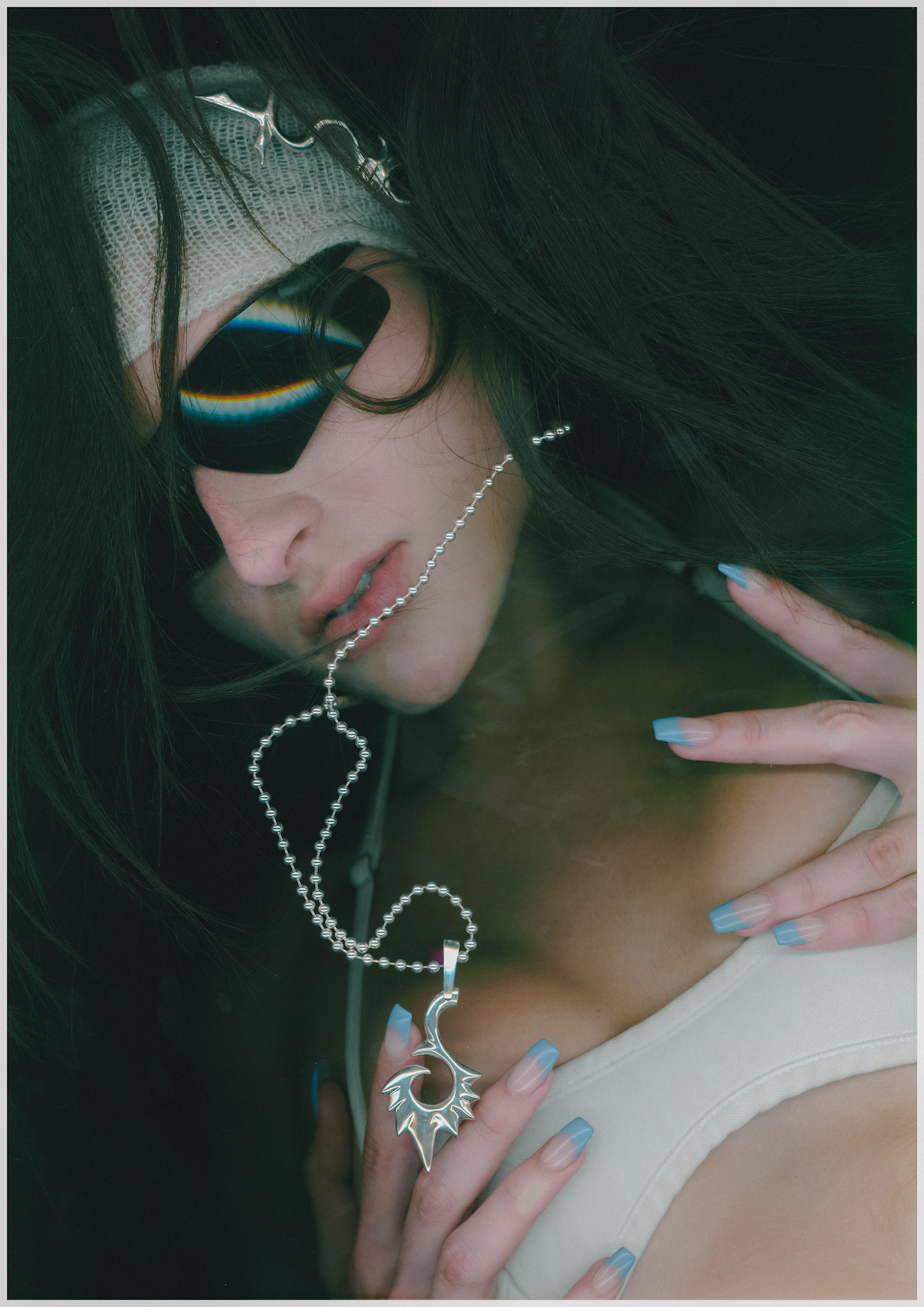
Who is Jane Wade?
I've always described myself as a creative conduit and fine artist above all other trades. For as long as I could remember, I would paint and draw, make jewelry, ceramics. I play piano and guitar and have picked up tattooing in recent years. I've always had a high aptitude for kinesthetic learning. Most people that know me would probably say my true talent is the speed in which I can watch, learn, and execute something new.
How did you get started in your artistic practice?
I attended the Academy of Art University in San Francisco thinking I would be a painter or an illustrator. I always had a tactile approach to my art, so when I found the Fashion program that's when everything clicked for me. It worked like a channel to fuse all the styles and avenues of art that I grew up practicing. Truly, I viewed fashion as a more approachable industry than fine art to hone my creativity while also being able to make a living for myself. I always had an urge to launch my own brand some day, but when I graduated university I was aware that I had a lot to learn before I was ready to lead a successful fashion business.
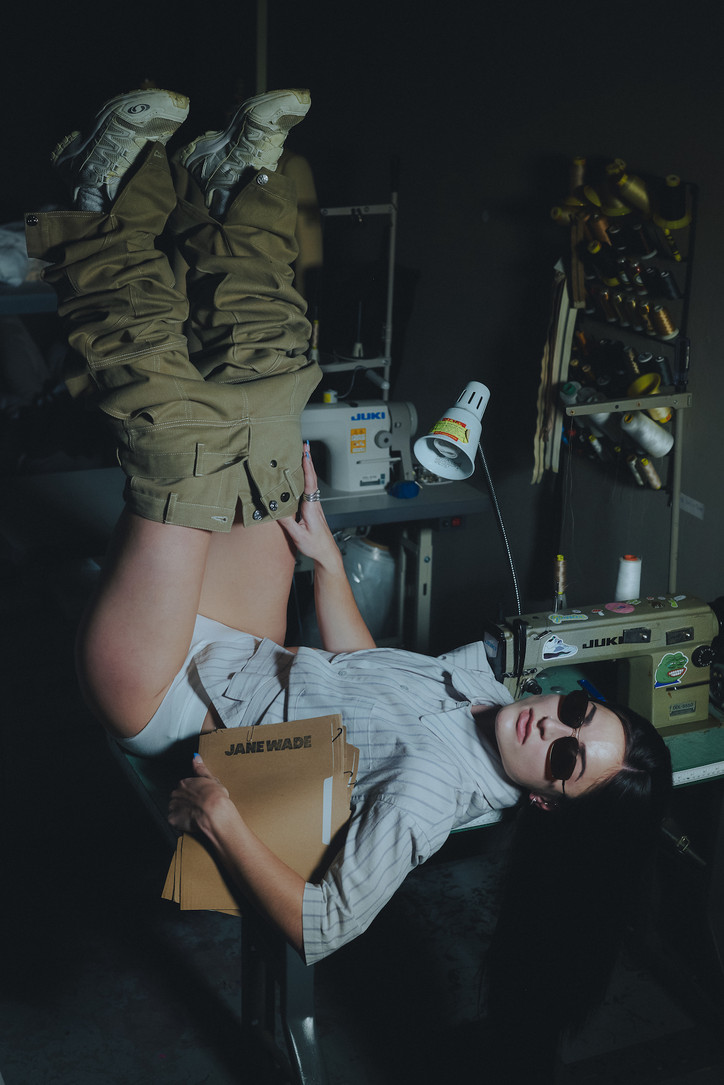
Over the years, you've assisted other New York designers like Alexander Wang and Martine Ali. What has been central to building longlasting relationships within the community?
During my Internship at Wang I would frequently stay late off the clock to learn from the designer that mentored me. She was very generous with her knowledge and I think showing that true hunger to learn in the early phases of my career was pivotal. Building my relationships further with independent brands like Martine's, the key was extending myself as a resource. People remember when you work hard for them while they're building their own business. Naturally Martine and I became very close friends as we shared this childhood love for jewelry and working with our hands. Working with her was my first exposure to a unique studio-office experience which ultimately taught me you don't have to follow a specific corporate format in Fashion to become successful.
You also work with Elena Velez in design development, right? How has that informed your approach with your own label?
Elena is wildly talented, she has such a strong creative vision. My role with her has been an exercise in the full collection development cycle. Overseeing everything from sketch review through the show, and production and shipping wholesale orders thereafter. We work really closely on all facets of the brand from building budgets, costing for the collections, strategy for sales, production, sample development and beyond. When a brand is emerging you have to wear so many different hats, so working with Elena has helped exercise and cement my knowledge in all of these areas which gave me the confidence I needed to take the leap with my own brand, realizing I finally knew enough to make the leap. There are so many layers of a fashion brand that people don't see. It's so much more than just being a creative individual making a product that people will relate to.
How have you developed your own brand identity?
The brand's identity has been curated naturally, and definitely in response to my own experience working in large corporate design structures. So frequently in times where I was still developing my own personal style, I felt out of place on design teams. There was a disconnect for me with the ultimate purpose of fashion as an expression and working in an industry where I didn't feel like I could express myself, or I could only express myself in someone else's aesthetic language. For me, this was so counterintuitive. A lot of the pieces I design are having a juxtaposing conversation between professionalism and what's not deemed professional in traditional office wear using proportion and exaggeration as vehicles of acceleration (showing skin, being sexy, loud or colorful in bold silhouettes.) I think the brand is constantly revisiting this theme in the work, and it's absolutely coming from a personal place.
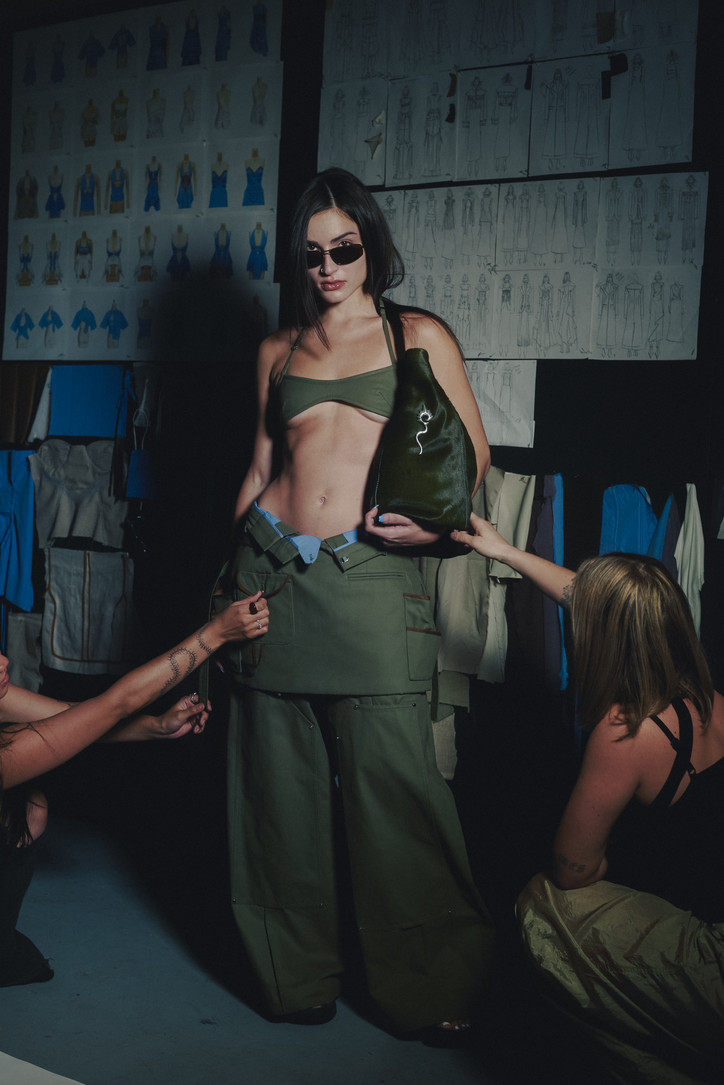
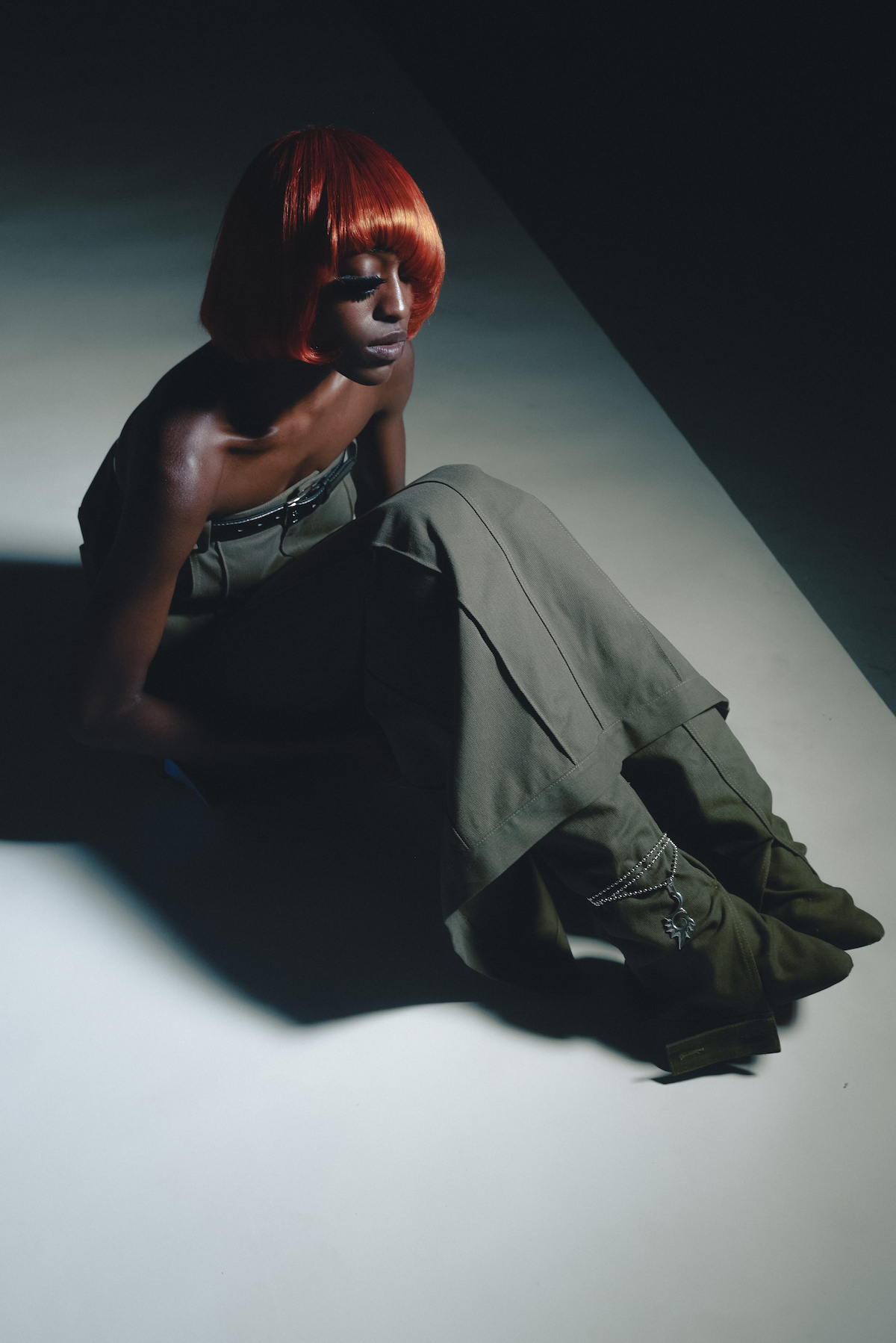
Your collections will be available at Assembly, and even Casimir Pulaskiday in Tokyo. How were you able to expand to a global community so quickly?
CP and Assembly were connected from freelance clients, I realize the more years I expand into the fashion community, we are all closely connected and the network is much smaller than it appears. Additionally, I'm never above a good, cold email! I would say every season I email over 100 new people and I get a lot of opportunities this way in addition to leveraging connections I already have. You miss 100% of the shots you don’t take, right?
How do your collections interact from season to season?
Each new collection I try to begin by expanding on the hero styles from the previous season. Sometimes with a direct new iteration, or others I may re-drape a completely new garment from an old idea to give it a new storyline in the overall context. Embellishments and techniques are the next major expansion in the collection so I try to develop new ways and materials to execute a technique for at least two seasons to make it simultaneously feel fresh while still communicating and establishing the brand's identity codes.
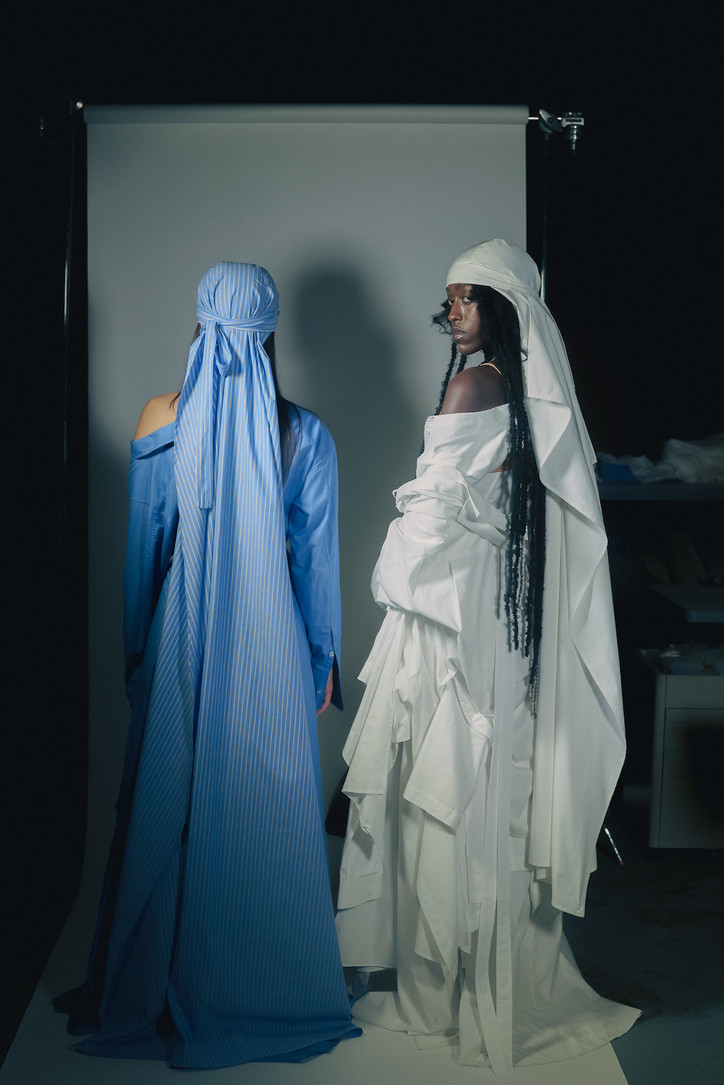
Why did you decide to seal the gap between workwear and office attire?
My father is a contractor while my mom is a hair stylist. I grew up in salons that my dad built and my mom ran. She was always so stylish and chic with how she dressed. She would lean into menswear and tailoring in her own personal work-style, always dressing for her own version of a conventional office. In retrospect I think this informs a huge part of the brand's customer today. She kept all the latest fashion magazines at the shop. The garments I grew up around were always classic blue collar utilitarian on my father's side, and polished fashionable functional on my mom's. These were the dress codes that raised me. I think marrying these two is a reflection of my childhood in a way. The brand is always visiting this theme of workwear and how garments are made to work for us across all professions. I love when white collar uniforms have conversations with blue collar functions, as they are the antithesis of each other in every day purpose.
What is your ideal office?
I'm so lucky to look around my studio now and see my ideal office forming before my eyes. All the talented creatives that lend a hand in my process express themselves in their own unique ways. My ultimate goal is to curate an environment where everyone feels free to express their identity in a way that makes them feel comfortable and more importantly confident. I love seeing my team in something sexy, casual, or even lazy. Who says you can't be wildly talented with your belly button showing or wearing sweatpants to the office for a day? The long term goal of the brand's internal structure is to dismantle some of these standards we have in the industry where in order to be perceived as professionals, we are limited conservative dressing. We work in fashion after all!
How do you spend your day-to-day?
Each day is unique. Some days are as structured as meeting the team at the studio to build the development boards and draping / sewing swatches for the new collection. Production from the previous season happens in tandem with Development so on less glamorous days I’ll be at home building costing spreadsheets and budgeting, and ordering materials for wholesale orders.
As production and sampling picks up I spend almost every day at the sample rooms with the sewers answering questions or fitting with the patternmakers. Other days it can be as casual as meeting at a bar with my stylist to compile boards and research for special projects like this OFFICE feature. Luckily all of my freelance clients have similar needs and destinations so it makes it easy to multitask my other roles with my own brand's schedule. I’m very fortunate to be disciplined enough to manage it all.
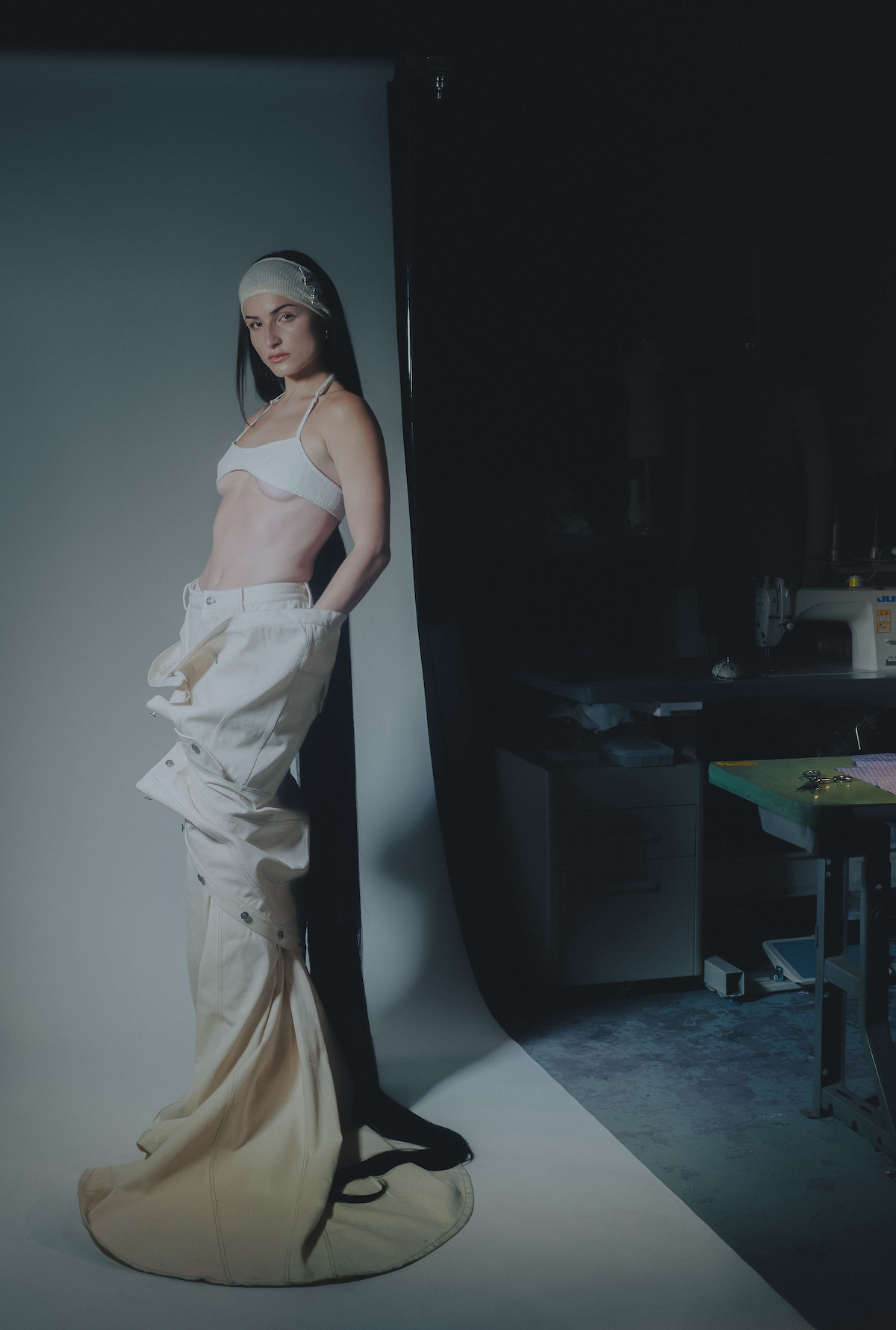
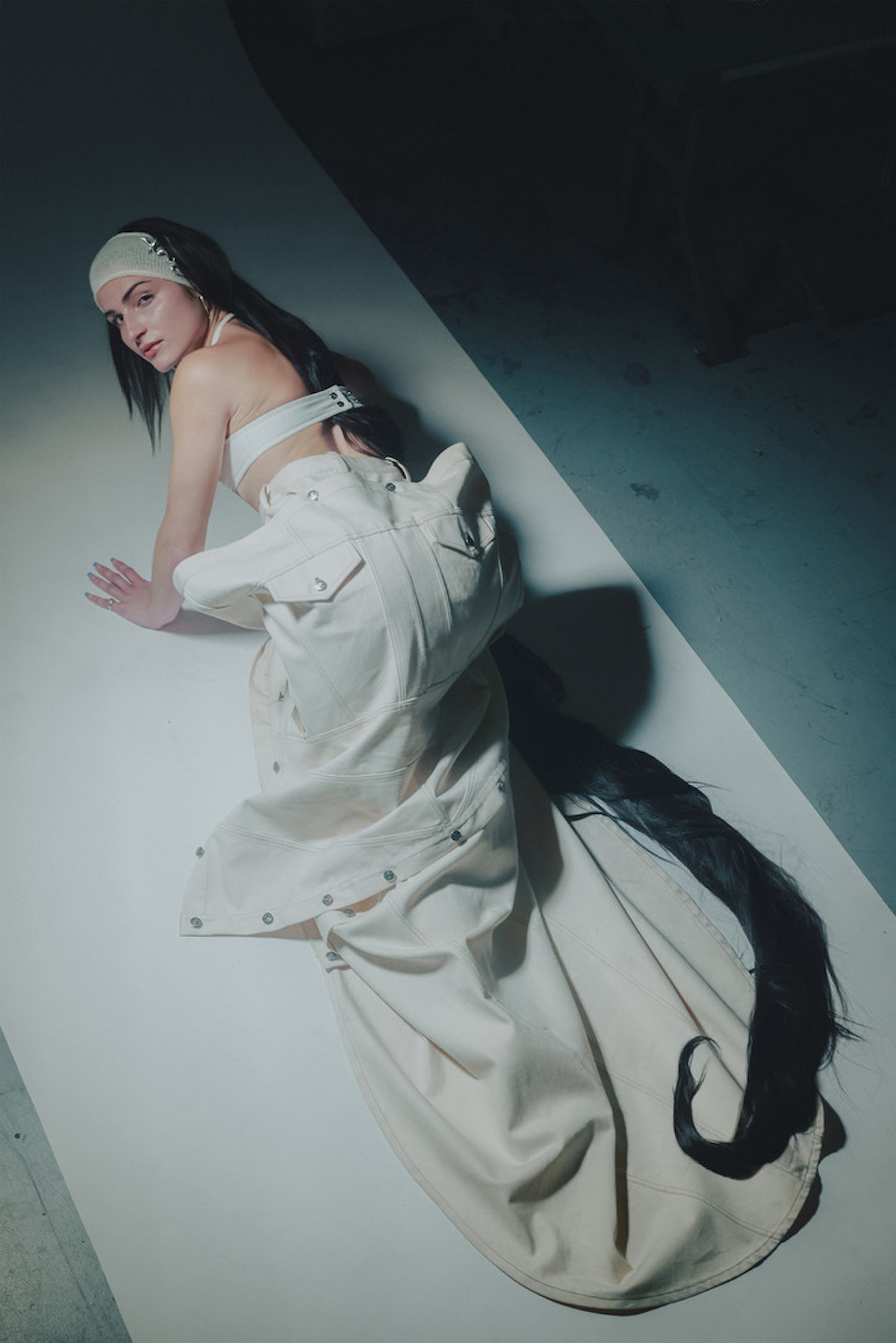
How would you describe the people who wear Jane Wade?
Addressing the question of “whose your target customer” was really challenging for me to answer with the first collection. As people began to relate to the product we were able to define specific archetypes within the collections language. Usually they’re other creatives we work closely with and love. In fittings and styling we might say something like “ this coat is a Shelby girl” or “this mini bra is a Martine piece” this helps us identify during the entire development process the exact person wearing each item and how they might style it for everyday wear from a more commercial perspective.
And, what's next for you?
Because the brand is so young this next season's focus is deepening the brand's unique universe- expanding our reach within the press - and connecting with a wider reach of customers so more than just our current NYC community is able to connect with the product. Our FW23 collection will release exclusively in NYC with a premier retailer that we won’t announce quite yet, so you’ll have to stay tuned for the release!
